We earn commissions if you shop through the links below. Read more

Business Plan vs. Business Model
Back to Business Plans
Written by: Carolyn Young
Carolyn Young is a business writer who focuses on entrepreneurial concepts and the business formation. She has over 25 years of experience in business roles, and has authored several entrepreneurship textbooks.
Edited by: David Lepeska
David has been writing and learning about business, finance and globalization for a quarter-century, starting with a small New York consulting firm in the 1990s.
Published on February 19, 2023
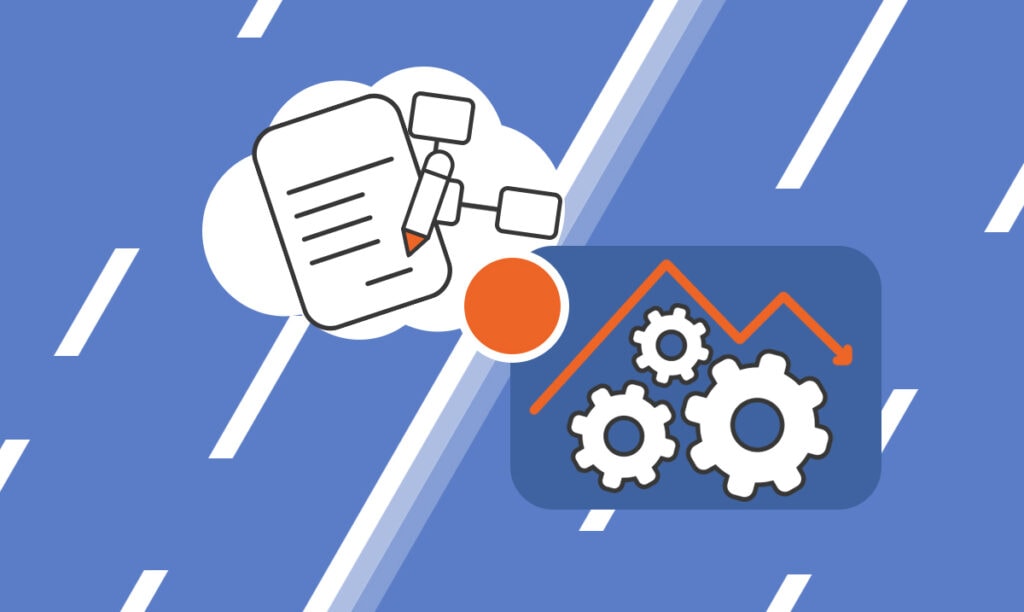
If you’re starting a business , you have a business model, whether you know it or not. A business model is the foundation of any business idea; it basically outlines how the concept offers value and potential for growth. Essentially, a solid business model ensures that the business will make money.
A business plan , on the other hand, is the business owner’s plan to put that model into action. It’s much more detailed and includes financial projections, objectives, management decisions and further steps.
Still unsure? Have no fear, this handy guide lays out the differences between a business plan and a business model so that you know exactly what you and your business need to succeed.
| Aspect | Business Plan | Business Model |
|---|---|---|
| Definition | A formal written document that elaborates on the operational, financial, and marketing details of a business. It is often used to secure funding or guide a business's growth. | A conceptual framework that defines how the business creates, delivers, and captures value. Often summarized visually with tools like the Business Model Canvas. |
| Purpose | To detail the company's strategy, milestones, financial projections, market research, and other specifics. Helps in providing direction, attracting investors, or guiding expansion. | To illustrate how a company operates, from sourcing raw materials to delivering the end product/service to customers, and how it intends to achieve profitability. |
| Components | Executive Summary Company Description/Overview Products/Services Offered Market Analysis Marketing and Sales Strategies Operations and Management Financial Plan Appendices | Value Proposition Key Activities Cost Structure Key Partners Key Resources Revenue Streams Customer Segments Customer Relationships Channels |
| Duration | Typically covers a specific time frame (like 1, 3, 5 years). | Timeless as long as the business operations remain consistent, but needs revision when the model changes. |
| Target Audience | Investors, lenders, partners, and internal team members. | Primarily for internal stakeholders but can be used externally for partners and strategic collaborations. |
| Level of Detail | Detailed and comprehensive. Can be dozens of pages long. | High-level and summarized. The Business Model Canvas, for instance, fits on a single page. |
| Flexibility | Tends to be fixed for the time frame it covers but can be updated as needed. | Typically more fluid, with frequent updates as the business learns and pivots. |
| Main Focus | Planning the future based on research, forecasts, and assumptions. | Describing how the business operates in its entirety and how it creates value. |
- Business Model
In simple terms, a business model is how the business will make money. Selling ice to eskimos, for instance, is a bad business model. Selling team jerseys to rabbit sports fans, on the other hand, is a solid business model.
The components of a business model are best illustrated by Swiss entrepreneur Alexander Osterwalder’s Business Model Canvas, which is a visual representation with nine sections. Four sections represent internal elements of a business that enable it to function and are related to costs.
Four other sections represent external elements that enable the business to bring in revenue and are related to the customer. The ninth section is the business’ value proposition.
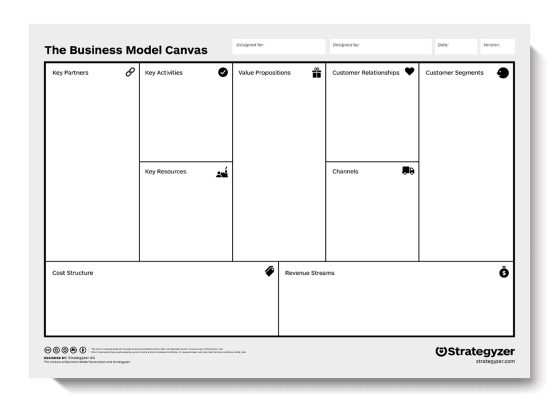
Value Proposition
The value proposition is at the heart of your business model. Your value proposition, which should be no more than two sentences long, needs to answer the following questions:
- What are you offering
- Whose problem does it solve
- What problem does it solve
- What benefits does it provide
- How is it better than competitor products
Key Activities
Key activities are all the activities required to run the business and create the proposed value. These can include product development and distribution and any other necessary activities.
Cost Structure
The cost structure is a sum of all you’ll need to spend to make the business function. It’s the costs you’ll incur to run the business and bring in revenue.
Key Partners
Key partners are external partners involved in delivering value, such as vendors and suppliers, or maybe a bank.
Key Resources
Key resources are any necessary practical elements that come with a cost. These might include your office space, employees, and equipment like computers.
Revenue Streams
Revenue streams are the ways in which you receive payment from customers. You may have more than one revenue stream, such as via direct sales and subscriptions.
Customer Segments
Customer segments are the groups of people to whom you provide goods or services. In other words, your target market. Maybe your products are aimed at younger women, for instance, or older men. Whatever your target segments, you should build customer personas of each group so that you know how and where to reach them with your marketing.
Customer Relationships
Customer relationships refer to how you interact with your customers to deliver value. Your interactions may be online only, by phone, in-person, or all of the above.
Channels refer to how you reach your customers, such as social media, internet search, direct sales calls, trade shows, and so on.
To Summarize
If you’re just starting a business, the Business Model Canvas is a great way to understand and examine your business model. One thing to remember is that the elements you put in your Canvas will be based on assumptions that will at some point be tested in the market and adapted as needed.
Another thing to remember is that you do not need to do a Business Model Canvas. It’s merely an exercise that can help provide insight into your business model.
- Business Plan
A business plan is a detailed document that describes how the business will function in all facets. The key is in the “plan” part of the name. It will specify how you’ll launch your business, gain customers, operate your company, and make money. A business plan, however, is not a static document .
The initial version will be based largely on assumptions, supported by research. As you run your business you’ll constantly learn what works and what does not and make endless tweaks to your plan.
Thus, creating a business plan is not a one-time action – it’s a dynamic and continuous process of crafting and adapting your vision and strategy.
You’ll present your business plan to potential backers, though in recent years some investors have begun to embrace the Business Model Canvas as a tool to assess a business’ potential.
A strong business plan includes eight essential components .
1. Executive Summary
The executive summary is the initial section of your business plan , written last, summarizing its key points. Crucial for capturing investors’ and lenders’ interest, it underscores your business’s uniqueness and potential for success. It’s vital to keep it concise, engaging, and no more than two pages.
2. Company Description/Overview
This section provides a history of your company, including its inception, milestones, and achievements. It features both mission (short-term goals and driving force) and vision statements (long-term growth aspirations). Objectives, such as product development timelines or hiring goals, outline specific, short-term targets for the business.
3. Products or Services Offered
Detail the product or service you’re offering, its uniqueness, and its solution to market problems. Explain its source or development process and your sales strategy, including pricing and distribution channels. Essentially, this section outlines what you’re selling and your revenue model.
4. Market Analysis
- Industry Analysis : Research your industry’s growth rate, market size, trends, and future predictions. Identify your company’s niche or sub-industry and discuss adapting to industry changes.
- Competitor Analysis : Examine main competitors , their unique selling points, and weaknesses. Highlight your competitive advantages and strategies for maintaining them.
- Target Market Analysis : Define your target market , their demographics, needs, and wants. Discuss how and where you’ll reach them and the potential for market shifts based on customer feedback.
- SWOT Analysis : Break down your company’s strengths, weaknesses, opportunities, and threats. Detail your unique attributes, potential challenges, market opportunities, and external risks, along with strategies to address them.
5. Marketing and Sales Strategies
- Marketing and Advertising Plan : Use insights from your target market analysis to decide advertising channels, emphasizing platforms that best reach your audience, like TikTok over Instagram. Develop a concise value proposition to be central to all marketing, detailing how your product addresses specific needs.
- Sales Strategy and Tactics : Define where and how you’ll sell, such as online, in-store, or through direct sales calls. Sales tactics should highlight the customer’s needs, presenting your solution without overly aggressive promotion.
- Pricing Strategy : Decide on pricing based on market positioning, whether you aim to be a discount or luxury option. Ensure prices cover costs and yield profit, and position your product in a manner that aligns with the chosen price range. Justify your chosen pricing strategy in this section.
6. Operations and Management
- Operational Plan : Outline daily, weekly, and monthly operations, specifying roles, tasks, and quality assurance methods. Include supplier details and order schedules, ensuring clarity on key business functions and responsibilities.
- Technology Plan : For tech-based products, detail the development plan, milestones, and staffing. For non-tech companies, describe the technology tools and software you’ll employ for business efficiency.
- Management and Organizational Structure : Define who’s in charge, their roles, and their backgrounds. Discuss your management strategy and forecast the development of your organizational hierarchy.
- Personnel Plan : List current and future hires, specifying their roles and the qualifications necessary for each position. Highlight the significance of each role in the business’s operations.
7. Financial Plan
- Startup Costs : Clearly detail every anticipated cost before starting operations. This will be vital for understanding the initial investment required to get the business off the ground.
- Sales Projections : Estimate monthly sales for the first year, with an annual forecast for the next two years.
- Profit and Loss Statement : An overview of revenue minus costs, resulting in either a profit or loss.
- Cash Flow Statement : Provides clarity on the business’s liquidity by showing cash inflows and outflows over a specific period.
- Balance Sheet : Displays the company’s net worth by detailing its assets and liabilities.
- Break-even Analysis : Understand at which point revenues will cover costs, helping to predict when the business will start making a profit.
- Funding Requirements and Sources : Enumerate the required capital and the sources of this funding. This should also include the purpose for which these funds will be used at different stages.
- Key Performance Indicators (KPIs) : Identify the metrics vital for measuring the company’s performance. Use these indicators to spot challenges, understand where improvements can be made, and pivot strategies as necessary. Ensure that each KPI aligns with the business’s objectives and offers actionable insights for growth.
Remember, although the financial section might seem daunting, it is pivotal for understanding the economic feasibility of your business. Proper financial planning helps in making informed decisions, attracting investors, and ensuring long-term sustainability. Don’t hesitate to engage financial experts or utilize tools and software to ensure accuracy and comprehensiveness in this section.
8. Appendices
The appendices section of a business plan is a repository for detailed information too extensive for the main document. This can include resumes of key personnel, full market research data, legal documents, and product designs or mockups. By placing this data in the appendices, it keeps the main plan concise while allowing stakeholders access to deeper insights when needed. Always ensure each item is clearly labeled and referenced at the relevant point in the main document.
As you can see, business models and business plans have some similarities, but in the main they are quite different. Your business model explains the foundational concept behind your business, while a business plan lays out how you’ll put that model into action and build a business.
When you’re starting a business, it’s best to have both, as the work of getting them done involves learning about your business from every angle. The knowledge you’ll gain is likely to be invaluable, and could even be the difference between success and failure.
Leave a Reply Cancel reply
Your email address will not be published. Required fields are marked *
Save my name, email, and website in this browser for the next time I comment.
Subscribe to Our Newsletter
Featured resources.
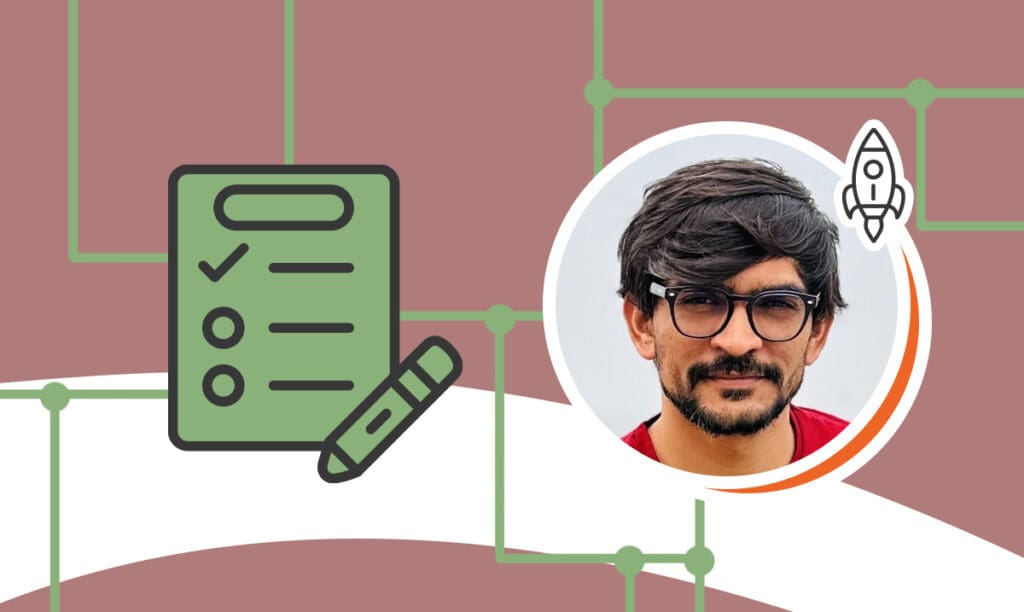
Crafting the Perfect Business Plan: A Deep Dive with Upmetrics’ Vinay Kevadiya
Carolyn Young
Published on October 13, 2023
In the first segment of our conversation with Vinay Kevadiya, the visionary behind Upmetrics, we explored the platform’s origins and itsunique ...
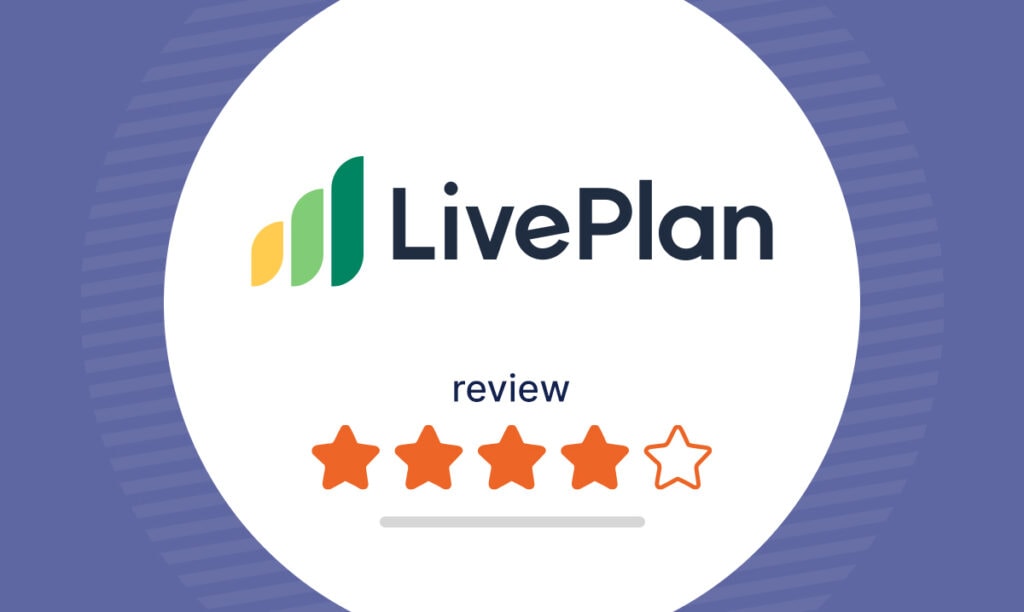
LivePlan Software Review: Features, Cost, Pros & Cons
Published on September 15, 2023
When you’re starting a business, a business plan is essential whether you’re going to obtain financing or not. Creating a business plan helpsyou ...
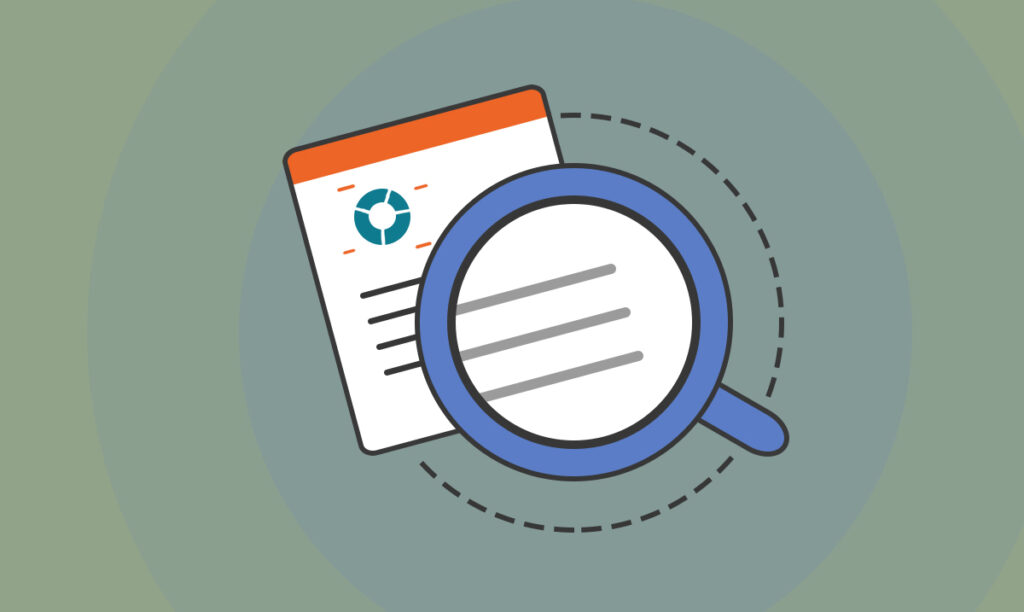
What to Include in Your Business Plan Appendix?
Published on September 13, 2023
Launching a business involves countless tasks, and one of the crucial early hurdles is writing a business plan. Many entrepreneurs who aren’tlooki ...
No thanks, I don't want to stay up to date on industry trends and news.
- Business Planning
Business Model vs. Business Plan: Key Differences Explained
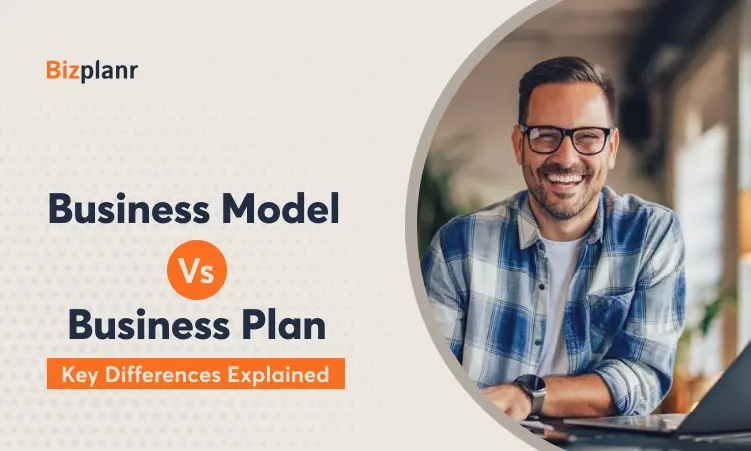
Written by Vinay Kevadiya
Published Sep. 24 2024 · 6 Min Read
“Failing to plan is planning to fail," as the old saying goes. This sentiment rings especially true in the modern business world.
For entrepreneurs, effective business planning can be the difference between a dream and a reality. And this reality hinges on two important blueprints: business models and business plans.
But what differentiates them, and when should you focus on each?
In this article, we will explore the key differences in the business model vs business plan debate and help you clarify these concepts.
What is a business model?
A business model is a plan that shows how a company creates, delivers, and captures value. It explains how a business operates, spends money, and makes money in a way that leads to profit.
A good business model answers key questions like:
- What problem are you solving?
- What is your target market?
- How much money do you need?
- What will you sell, and how will you make money?
Pricing and costs are the key factors that affect profitability.
Beyond the financials, some business models consider the broader social or cultural impact a company will have. Think of it as the exchange of value beyond just money–it's about the difference you'll make in your community or industry.
Here are some basic types of business models:
- Advertising: Show ads from other companies to specific groups of people. Think of platforms like LinkedIn and YouTube.
- Affiliate: Get a small commission for promoting other people's products. You've probably seen this on Amazon or through programs like ClickBank or Share-a-Sale.
- Franchise: Take a successful business model and let others open their own branches. You get a share of their profits. McDonald's and The UPS Store are prime examples.
- Bundling: Packaging multiple products or services together at a discounted price. (Common in telecoms.)
- Fee-for-service: Selling skills or expertise at an hourly rate or project-based fee. Consulting firms like McKinsey & Company and even freelance writers fall into this category.
- Freemium: Gives a basic version of something away for free, but you pay for the better version with more features. LinkedIn and Slack are the most common examples.
- Manufacturer: Takes raw materials and turns them into products people can buy. This is how we get cars, furniture, and even our phones.
- Pay-as-you-go: You only pay for what you use. Internet phone plans are the perfect example, where you buy internet data.
What is a Business Plan?
A business plan is your detailed guide, outlining everything from launching products and setting milestones to even planning your exit. It clearly defines what your company does, its long-term vision, and the strategies to achieve success.
In short, a business plan is your roadmap to growth.
Business plans typically come in two main styles: traditional and lean startup. The U.S. Small Business Administration notes that traditional business plans are the more commonly used format.
- Traditional business plans are like a detailed document for your business. They cover everything from your marketing strategy to your financial projections.
- Lean startup plans are more like a sketch–focusing on the core essentials. They highlight the key elements, like the problem you're solving, your target customers, and your unique value proposition.
Components of a business plan vs. business model
The components of your business model are the foundation of your business. They define your business operations and strategy for company success.
Here are some of the key ones you'll want to include when creating your business model:
- Customer segment
- Value proposition
- Revenue streams
- Customer relationships
- Key activities
- Key resources
- Key partners
- Cost structure
While a clear business model explains how your business works, a business plan is like your company's resume.
It’s a detailed document often shared with investors, lenders, and other stakeholders to give them a clear view of the company's potential for success.
Because of this, business plans tend to include more detailed sections, such as:
- Executive summary
- Company description
- Products and services
- Market analysis
- Customer analysis
- Competitor analysis
- Marketing and sales plan
- Operations plan
- Financial plan
Business model vs. business plan: what’s the difference?
Both business model and business plan are important for your business. However, they play unique roles at various stages of your business journey.
Let's break down those key differences:
| Feature | Business Model | Business Plan |
|---|---|---|
| Defines the core logic of how a business operates and generates profit. | Provides a roadmap for executing the business model and achieving specific objectives. | |
| Primarily internal, used to guide strategic decision-making within the company. | Often shared externally with investors, lenders, and other stakeholders. | |
| Relatively flexible and adaptable, can evolve as the business grows and the market changes. | More rigid and structured, typically covers a specific timeframe (e.g., 3-5 years). | |
| Primarily internal stakeholders (founders, management team). | Internal and external stakeholders (investors, lenders, partners, etc.). | |
| Typically created in the early stages of a business, often before a formal business plan. | Developed once the business model has been established and validated. |
When to use a business model vs. a business plan
A business model is best for early-stage startups or entrepreneurs who want to check or improve their ideas. It's a flexible organizational structure for outlining how your company will create and capture value for customers.
You can use a business model when you're:
- Testing the viability of a new business idea.
- Pitching the business concept to investors or partners.
- Evaluating revenue streams and cost structures.
- Making adjustments to an existing business or pivoting strategies.
A business plan is commonly used once a business idea has been approved or for businesses that are looking to grow or secure funding. It includes more detailed steps and formal strategies.
When to use a business plan:
- Seeking investment or loans.
- Managing long-term growth and scaling.
- Setting clear objectives and milestones for internal teams.
- Presenting a comprehensive roadmap to stakeholders.
For the best results, we recommend using both the business model and business plan together. Start with the business model to sketch out the essentials of your business and quickly test your ideas.
Once those ideas are approved, create a business plan to prep your execution strategy. This ensures that your detailed plan is rooted in a solid, tested foundation.
There's no single right way to choose between a business plan and a business model–it all depends on your specific goals.
Remember, planning is a continuous process. You can't just make a plan once and expect it to work forever!
To keep your business model and plan up-to-date, try a tool like Bizplanr. It uses AI to help you quickly create professional business plans, including essential financial projections, and makes it easier to move from idea to execution.
Get Your Business Plan Ready In Minutes
Answer a few questions, and AI will generate a detailed business plan.
Generate your Plan
Frequently Asked Questions
Do I need both a business model and a business plan?
Yes, having both is ideal. The business model will lay out your revenue streams and how your business delivers value. On the other hand, a business plan will have strategies and steps to grow and manage the business. Together, they give a complete picture of how to operate and scale effectively.
Can a business plan include a business model?
Yes, a business model is usually part of the business plan. It forms the basis for understanding how you’ll generate income. The rest of the plan sheds more light on operational details like marketing and finances.
What is a better starting point, a business model or a business plan?
It’s generally advisable to start with a business model as it will give you a clear idea of how your business will create and capture value. Once that concept is clear, you can then create a detailed business plan to fill out the details like market research and strategies for execution.
How does a business model impact financial projections in a business plan?
It impacts because the business model defines revenue streams, cost structures, and pricing strategy. These details shape how you project your profits, losses, and cash flow in the business plan.
Is a business model canvas the same as a business plan?
No, they’re different tools. A business model canvas is a one-page snapshot that has key components like value propositions and customer segments. A good business plan is much more detailed. As it covers everything from market strategies to financial forecasts. The canvas helps with clarity, while the plan helps with execution.

As the founder and CEO of Upmetrics, Vinay Kevadiya has over 12 years of experience in business planning. He provides valuable insights to help entrepreneurs build and manage successful business plans.
Follow Vinay Kevadiya
Related Articles

What Makes a Good Business Plan

Pitch Deck Vs Business Plan: Which One Do You Need?

11 Common Business Plan Mistakes to Avoid in 2024
Business Plan vs Business Model Canvas Explained

6 min. read
Updated July 29, 2024

It might be stating the obvious, but planning and preparation are keys to success in business.
After all, entrepreneurs put in hard work to develop their product, understand the market they plan to serve, assess their competitive landscape and funding needs, and much more.
Successful business owners also take time to document their strategies for guiding the growth of their companies. They use these strategies to take advantage of new opportunities and pivot away from threats.
Two common frameworks for documenting strategies – the business model canvas and the business plan – are also among the easiest to get confused.
Though they can complement each other, a business model canvas and a business plan are different in ways worth understanding for any entrepreneur who’s refining their business concept and strategy.
Let’s start by digging deeper into what a business model canvas is.
- What is a business model canvas?
You may have heard the term “business model” before. Every company has one.
Your business model is just a description of how your business will generate revenue. In other words, it’s a snapshot of the ways your business will be profitable.
Writing a business plan is one way of explaining a company’s business model. The business model canvas takes a different approach.
A business model canvas is a one-page template that explains your business model and provides an overview of your:
- Relationships with key partners
- Financial structure
- And more…
While the business model is a statement of fact, the business model canvas is a strategic process—a method for either documenting or determining your business model.
It’s meant to be quickly and easily updated as a business better understands what it needs to be successful over time. This makes it especially useful for startups and newer businesses that are still trying to determine their business model.
You can think of a business model canvas as a condensed, summarized, and simplified version of a business plan. It’s a great way to quickly document an idea and get started on the planning process.
The business plan is a way to expand on the ideas from the canvas and flesh out more details on strategy and implementation.

Brought to you by
Create a professional business plan
Using ai and step-by-step instructions.
Secure funding
Validate ideas
Build a strategy
Components of a Business Model Canvas
The simplest way to think about your business model canvas is to map it out visually. A business model canvas covers nine key areas:
- Value proposition : A company’s unique offering in the market and why it will be successful.
- Key activities: The actions that a company takes to achieve its value proposition.
- Customer segments : The types of people or businesses that are likely to want a company’s products or services.
- Channels : How a company reaches customers through marketing and distribution efforts.
- Customer relationships: How a company interacts with customers and maintains important relationships.
- Revenue streams: The ways in which a company makes money.
- Key resources: The assets such as property, equipment and staffing that a company needs to perform its key activities.
- Key partners: The relationships with suppliers, vendors, customers and other stakeholders a company must maintain in order to be successful.
- Cost structure: The major drivers of company expenses that will need to be tracked and managed.
[Want an even simpler alternative? Try downloading our free one-page plan template and start building your plan in less than 30 minutes.]
To get a better sense of how a business model canvas documents business strategy, consider a company like Netflix. The streaming company’s business model is based on generating subscription revenue through its content library and exclusive content.
If Netflix executives were to create a business model canvas, it would map out how the company leverages key resources, partnerships, and activities to achieve its value proposition and drive profitability. The business model is the destination.
The great thing about a business model canvas is that you can quickly document business ideas and see how a business might work at a high level. As you do more research, you’ll quickly refine your canvas until you have a business idea you think will work.
From there, you expand into a full business plan.
- What is a business plan?
If a business model canvas captures what a company looks like when it’s operating successfully, then a business plan is a more detailed version along with a company’s blueprint for getting there.
Think of your business plan as a process of laying out your goals and your strategies for achieving them.
The business plan is more detailed, and changes over time. It examines each aspect of your business, from operations to marketing and financials.
The plan often includes forward-looking forecasts of a company’s projected financial performance. These are always educated guesses. But these forecasts can also be used as a management tool for any growing business.
Comparing actual results to the forecast can be a valuable reality check, telling a business if they’re on track to meet their goals or if they need to adjust their plan.
Using an investor-approved business plan template is also a must for companies hoping to receive a bank loan , SBA loan , or other form of outside investment . Anyone putting up funds to help you grow will want to see you’ve done your homework.
So a business plan is how you not only prepare yourself, but also show your audience that you’re prepared.
Components of a business plan
While there are several different types of business plans meant for different uses, well-written plans will cover these common areas:
- Executive summary : A brief (1-2 pages) overview of your business.
- Products and services : Detailed descriptions of what you’re selling and how it fills a need in the market.
- Market analysis : Assessing the size of your market, and information about your customers such as demographics (age, income level) and psychographics (interests, values).
- Competitive analysis : Documenting existing businesses and solutions your target customers are finding in the market.
- Marketing and sales plan : Your strategies for positioning your product or service in the market, and developing a customer base.
- Operations plan : Describing how you will run the business from day to day, including how you will manage inventory, equipment, and staff.
- Organization and management team: Detailing the legal structure of the business, as well as key members, their backgrounds and qualifications.
- Financial Plans : Business financials that measure a company’s performance and health, including profit & loss statements, cash flow statements and balance sheets. Effective financial plans also include forward-looking sales forecasts and expense budgets.
How a business plan and business model canvas inform business strategy
Avoid the trap of using the two terms interchangeably. As we’ve shown, the two have different focuses and purposes.
The business model canvas (or our one-page plan template ) is a great starting point for mapping out your initial strategy. Both are easy to iterate on as you test ideas and determine what’s feasible.
Once you have a clearer sense of your idea, you can expand the canvas or one-page plan into a business plan that digs into details like your operations plan, marketing strategy, and financial forecast.
When you understand how – and when – to use each, you can speed up the entire planning process. That’s because the business model canvas lays out the foundation of your venture’s feasibility and potential, while the business plan provides a roadmap for getting there.
The work of business planning is about connecting the dots between the potential and the process.
Tim Berry is the founder and chairman of Palo Alto Software , a co-founder of Borland International, and a recognized expert in business planning. He has an MBA from Stanford and degrees with honors from the University of Oregon and the University of Notre Dame. Today, Tim dedicates most of his time to blogging, teaching and evangelizing for business planning.

Table of Contents
- How both inform your strategy
Related Articles

11 Min. Read
Use This Simple Business Plan Outline Example to Organize Your Plan

10 Min. Read
14 Reasons Why You Need a Business Plan

7 Min. Read
8 Business Plan Templates You Can Get for Free

5 Consequences of Skipping a Business Plan
The LivePlan Newsletter
Become a smarter, more strategic entrepreneur.
Your first monthly newsetter will be delivered soon..
Unsubscribe anytime. Privacy policy .

The quickest way to turn a business idea into a business plan
Fill-in-the-blanks and automatic financials make it easy.
No thanks, I prefer writing 40-page documents.

Discover the world’s #1 plan building software
- Start free trial
Start selling with Shopify today
Start your free trial with Shopify today—then use these resources to guide you through every step of the process.

Business Model vs. Business Plan: Key Differences
A business model is your core framework for operating profitably and providing value to customers; a business plan outlines how you’ll execute your goals.

“A goal without a plan is just a wish,” wrote famed French author and aviator Antoine de Saint-Exupéry. These words ring especially true in modern business planning. As an entrepreneur, planning is a skill that can help ensure your success.
Business models and business plans are both integral aspects of starting a business. But what are the similarities and differences between the two, and when is the right time to think about each for your company? Here’s a breakdown.
Business model vs. business plan: What’s the difference?
A business model is a company’s core framework for operating profitably and providing value to customers. They usually include the customer value proposition and pricing strategy. A business plan outlines your business goals and your strategies for achieving them.
The two documents have a few critical differences, namely their structure and application. But the topics they deal with—such as a company’s finances, goals, and operational framework—are largely the same.
Financial projections
- How they’re similar: Both business models and business plans provide an in-depth description for how a company will generate profits.
- How they’re different: A business plan includes financial performance details relevant to both internal and external stakeholders, such as investors, lenders, or potential business partners. Alternatively, a business model describes your value proposition —what product or service a business will offer and why customers should buy it—as well as the target market .
Operational details
- How they’re similar: Both business models and business plans include overarching information about how a company plans to operate, including components such as distribution channels and management structure.
- How they’re different: Business models explain the fundamental structure of a company, such as how it plans to create and deliver value to customers, while business plans get into the actionable details of how to achieve a company’s operational goals.
- How they’re similar: Business models and business plans are used to outline the goals, strategies, and operations of a business.
- How they’re different: A business plan generally incorporates a business model, explaining how the model should be implemented and executed to achieve the business's goals.
4 examples of business models
- Brick-and-mortar
- Direct to consumer
- Subscription
There are dozens of different templates that you, as a business owner, can draw from when building out your operation. Here are four examples of basic business models:
1. Brick-and-mortar
One of the most common retail business models, brick-and-mortar , includes a traditional physical storefront (or a pop-up shop ) selling either business to business (B2B), in the form of wholesale goods, or business-to-consumer (B2C). Although overhead such as rent is a consideration in this model, physical locations offer the competitive advantage of tapping in-person customers and building brand awareness through exposure.
2. Direct to consumer
Direct to consumer (D2C or DTC) is a retail model that allows your business to sell straight to customers, rather than going through a third-party retailer such as Amazon. There are numerous benefits to D2C, including higher profit margins because you don’t have an intermediary taking a cut. However, the main disadvantage of D2C is that you have to develop your own customer base without the help of an established platform.
3. Subscription
Projections indicate that the subscription ecommerce market has boomed in recent years and is set to hit nearly $900 billion in 2026. The subscription business model includes charging customers a recurring fee for a good or service—anything from home-delivery meal kits to media streaming. Subscription services are dependent on customer relationships and customer loyalty , but they can offer businesses a more predictable revenue stream.
4. Freemium
Under a so-called freemium model, consumers can access part of the business’s goods or services free of charge, but must pay to receive unlimited access to everything the company has to offer. Examples include many media organizations, such as The New York Times, which offers several free articles before requiring a subscription, or audio streaming service Spotify, which has a free version with ads, as well as a paid version without.
What's in a business plan?
A comprehensive business plan details many aspects of your company, including everything from marketing strategies to finances to the legal ownership structure. Here are a few key sections to include when writing your business plan.
- Executive summary . The executive summary includes your mission statement , an explanation of your core values and goals, a brief company history, and descriptions of the products or services you plan to provide to a potential or existing market.
- Organizational structure. Management hierarchy, as well as their roles and responsibilities, would be included in this section.
- Marketing and sales. How do you plan to market your offerings? Who is your target market? What is your pricing strategy and how does it compare to that of your competitors? How do you plan to acquire and retain customers? All these questions should be answered in this section.
- Expected financial performance. This includes projected revenue streams, cash flow management , cost structure, expenses, and anticipated profitability. It typically covers from one to five years in the future.
- Business operations. This section covers everything about the day-to-day running of your business, including your storefront (if you have one), inventory management , supply chain, and production.
Business models vs. business plans FAQ
Which comes first, a business model or business plan.
A business model typically comes before a business plan . Business plans often include the business model, and then explain in detail how you plan to achieve the goals set out in a model.
How can a company test and validate its business model before creating a business plan?
Market research, financial modeling, and even seeking out expert advice or consulting are all ways to review and validate your operation’s business model before developing a business plan.
How often should a company review and update its business plan?
A business should be prepared to update its business plan dynamically, based on changes in the market, shifts within the operation, or new investment or opportunities. Many businesses update their plans annually
The newsletter for entrepreneurs
Join millions of self-starters in getting business resources, tips, and inspiring stories in your inbox.
Unsubscribe anytime. By entering your email, you agree to receive marketing emails from Shopify. By proceeding, you agree to the Terms and Conditions and Privacy Policy .
popular posts

Learn on the go. Try Shopify for free, and explore all the tools you need to start, run, and grow your business.
Try Shopify for free, no credit card required.

- Investor Business Plan
- SBA Business Plan
- L1 Visa Business Plan
- E2 Visa Business Plan
- EB-5 Visa Business Plan
- Strategic Business Plan
- Franchise Business Plan
- Call our business plan experts:

- Schedule Free Consultation
Business Model vs Business Plan: Key Differences Explained
Why do some business owners have to face a failure while the other gets a great business success? You might sometimes wonder and ask yourself. Let us help you understand this. Other than business plan there is a term called “business model” is often used interchangeably. However, they found to have distinct concepts in the world of entrepreneurship and business development. Before embarking on a new venture, understanding the Business model vs business plan is essential for any entrepreneur. Both terms serve different purposes and have distinct scopes that help business owner become successful in their entrepreneurial journey.
So if you want your business to be successful, come up with a business plan and a business model. Although these two terms cannot coexist, likewise implementing these terms could not be possible for you until you get them deeply clear. A thoroughly drafted business plan is a document that outlines the goals, and financial projections of a company over a particular period. Comparatively, when talking about a business model, is a document that dives deeper into how a business drives, delivers and captures value.
Let’s now understand these two terms separately and then closely look into the key difference that makes them equally unique and valuable for every successful business.
What is a Business Model?
It is a written form document that describes how a company establishes, delivers, and captures value. It explains the core aspects of how a business operates, including its revenue streams, target customer segments, distribution channels, value proposition, and cost structure.
Business Model Key Components
- Value proposition
- Customer segments
- Revenue streams
- Cost structure
What is a Business Plan?
Imagine a business plan as a roadmap guiding you to navigate the operational and financial activities. It is a document that talks about your business objectives, strategies, and functions of a business in detail. It typically involves sections such as executive summary, company description, market analysis, organization and management structure, marketing strategy, product or service description, funding requirements, and financial projections.
Business Plan Key Components
- Executive summary
- Market analysis
- Organization and management plan
- Sales strategies
- Financial projections
Few Major Differences between the Business Model & Business Plan
Comparing a business plan and a business model lets you identify how these two categories in businesses work and may help foresee the differences among them to avoid making mistakes in your future business.
Business models describe how a business manages to deliver products and services to customers. They focus on the fundamental logic of how a company intends to follow sales funnels, and marketing strategies and sustain its operations over time. Whereas, business plans are more comprehensive explanations of every facet of a business that focuses on the specific steps and tactics a company will take to achieve its goals. It provides a direction about how the business will be launched, operated, and grown.
Business Model contains the overarching strategy and framework that guides the entire business. It’s more conceptual and has a high-level view of a company or business tendency. A business plan, on the other hand, turns a thorough synopsis of the enterprise into several tactical measures, such as target markets, financial predictions, operational plans, and short- and long-term goals.
Business plans primary goal is to persuade external parties such as potential investors and other stakeholders. For example, demonstrating a business plan to raise funds, apply for grants, or update investors on business progress.
Alternatively, business models are primarily designed for executives and internal members within a company. These schemes aim to help team members coordinate activities like producing a product, delivering, and capturing value in economic, social, cultural, or other contexts.
Flexibility in Nature
Business model is found to be more flexible and adaptable to changes in the market or business environment. It’s meant to be dynamic and evolve due to being at the center of the business plan.
On the other hand, a Business Plan tends to be more rigid and static, as it’s often used as a formal document for obtaining funding or as a roadmap for initial business operations.
Their Usage
The business owners can use the Business model to understand the fundamental mechanics of how a business will be operated and generate value. It helps the owner in decision-making and identifying opportunities for innovation or optimization.
In comparison business plan is typically utilized for external purposes such as securing funding from investors or loans from financial institutions, or for internal planning and communication purposes.
In general, the business model and business plan are completely different notions. The business model serves as the mechanism, defining the core components that generate the company’s revenue streams and sustainable operations. In contrast business plan is a written document presenting the future of a business. It’s a document that not only gets a business concept on paper but also outlines the company strategy and people’s roles that will be involved to lead the business to success for the years to come.
Although both the business model and the business plan are essential parts of a successful business. Therefore, all businesses must have a well-thought-out business plan along with an exceptional business model supporting them to consistently do hard work to win the competitive market landscape.
Several companies offer Business plan writer service , but you can trust us for numerous services on one platform such as Franchise Business Plan , E2 visa business plan , and Strategic Business Plan .
For more information on other services like Investor Business Plan , and Immigration Business Plan , and to know the Business plan cost , you can stay in touch with us by frequently visiting our website.
Leave a Reply Cancel reply
Your email address will not be published. Required fields are marked *
Save my name, email, and website in this browser for the next time I comment.
Get a Free Consultation Now
For free Consultation, please make an appointment with us by filling in the details here and Clicking on the “Submit” button. We will contact you within 24 Hours.
Confidentiality of your information is our foremost priority.
I Agree to get e-mails from BPlanWriter.
Business Model vs Business Plan: The Differences
In the entrepreneurial journey, understanding the difference between a Business Model and a Business Plan is crucial. These terms are often used interchangeably, but they serve distinct purposes and are integral at different stages of a business’s lifecycle. This guide aims to clarify these differences and provide insights into how each can be effectively utilized for business success.
What is the difference between a Business Model and a Business Plan?
A business model is a conceptual framework that explains how a company creates, delivers, and captures value. It’s the foundational blueprint outlining how the business will generate revenue and sustain itself in the market. On the other hand, a business plan is a comprehensive document that provides a detailed roadmap for achieving the business's goals. It includes specific strategies, financial projections, and operational plans. Understanding the key differences between these tools can significantly impact your business’s strategic planning and execution.
Key takeaway: Grasping the distinct roles of a business model and a business plan helps entrepreneurs align their strategic vision with practical execution.

Understanding the Business Model
A business model encapsulates the core business idea and how it will operate to generate revenue. It answers fundamental questions like what product or service the business will offer, who the target customers are, and how the business intends to reach and serve these customers. Essentially, it’s the strategy that outlines how the business will sustain itself and thrive in the competitive market.
Key takeaway: A well-defined business model is essential for conceptualizing the business's value proposition and ensuring its long-term sustainability.
Key components of a Business Model
The business model canvas is a popular tool for outlining the key components of a business model . These components include the value proposition, customer segments, channels, customer relationships, revenue streams, key resources, key activities, key partnerships, and cost structure. Each component plays a vital role in defining how the business will create and deliver value to its customers while maintaining profitability.
Key takeaway: Understanding and effectively integrating the components of a business model can help streamline business operations and enhance value delivery.
Examples of Business Models
There are various examples of business models that businesses can adopt, depending on their goals and market environment. For instance, the freemium model offers basic services for free while charging for premium features. Another example is the subscription model, where customers pay a recurring fee to access products or services. These models highlight different approaches businesses can take to generate revenue and achieve their business goals .
Key takeaway: Exploring different business models can provide inspiration and direction for structuring your own business's revenue-generating strategies.
How do Business Plan and Business Model differ?
Understanding the differences between a Business Plan and a Business Model is vital for any entrepreneur. While a business model provides a high-level overview of how a business intends to create and capture value, a business plan offers a detailed roadmap for achieving the business's objectives. Grasping these distinctions can significantly enhance strategic planning and operational success.
Differences in purpose and scope
The business plan is a comprehensive document that outlines the operational plan, financial projections, marketing strategies, and more. Its primary purpose is to detail how the business will achieve its goals and manage its operations. In contrast, the business model describes the underlying logic of how the business will generate revenue and sustain itself. It focuses on the value proposition, customer segments, revenue streams, and key resources.
Key takeaway: A business plan provides a detailed roadmap for business operations, while a business model focuses on the conceptual framework for generating revenue.
Business Plan vs Business Model Canvas
The business model canvas is a popular tool that succinctly outlines the key components of a business model, such as value proposition, customer relationships, and revenue streams. It’s a visual representation that helps entrepreneurs quickly grasp the business’s structure and strategy. On the other hand, a business plan is a more detailed document that includes extensive analysis, such as market research, financial projections, and operational plans. While the business model canvas offers a quick overview, the business plan delves into the specifics necessary for execution.
Key takeaway: The business model canvas provides a streamlined view of the business structure, while the business plan offers a detailed guide for implementation.
Strategic differences between Business Plan and Business Model
Strategically, the business model provides the foundation for a successful business by defining how the company will create and deliver value. It’s crucial for understanding the market in which the business operates and identifying the best ways to serve customers. Conversely, the business plan outlines the operational and strategic steps necessary to bring the business model to life. It includes detailed strategies for marketing, operations, and finance, ensuring that every aspect of the business is planned and accounted for.
Key takeaway: While the business model sets the strategic foundation, the business plan details the operational steps to achieve business objectives.
Why are Business Model and Business Plan important for a Business?
In the entrepreneurial world, both a business model and a business plan are crucial for achieving success. While a business model defines the strategy for generating revenue, a business plan offers a detailed roadmap for executing that strategy. Understanding their importance helps entrepreneurs effectively navigate the complexities of starting and growing a business.
The role of a Business Model in defining a Business Idea
A business model is paramount in articulating the core business idea . It lays out how the business will create, deliver, and capture value. This includes identifying the target market, defining the value proposition, and outlining the revenue streams. By focusing on these elements, the business model provides a clear framework for how the business intends to make a profit. It serves as a foundational guide that aligns the business’s strategic vision with its operational tactics.
Key takeaway: A clear business model is essential for conceptualizing the business idea and ensuring a strategic approach to generating revenue.
Business Plan's significance in outlining Marketing Strategies
A business plan is a comprehensive document that delves into the specifics of how a business will achieve its goals, particularly through its marketing strategies. It outlines the steps necessary to reach the target audience, promote products or services, and drive sales. This includes detailed plans for advertising, social media, and other marketing channels. By presenting a business plan , entrepreneurs can attract investors and stakeholders by showcasing a well-thought-out strategy for market penetration and growth.
Key takeaway: A well-crafted business plan is crucial for detailing the marketing strategies that will drive business growth and attract investment.
Setting Business Goals: Role of Business Model vs Business Plan
When it comes to setting business goals , both the business model and business plan play integral roles. The business model typically focuses on the high-level objectives related to value creation and revenue generation. It defines the broad goals that guide the business’s strategic direction. Conversely, the business plan breaks down these broad objectives into actionable steps, detailing how each goal will be achieved. This includes setting milestones, allocating resources, and establishing timelines.
Key takeaway: The business model lays out the strategic goals, while the business plan provides a detailed roadmap for achieving them.

What is the primary purpose of a business model? The primary purpose of a business model is to outline how a company creates, delivers, and captures value. It defines the strategy for generating revenue and sustaining the business in the market.
How does a business plan differ from a business model? A business plan is a comprehensive document detailing the operational, financial, and marketing strategies to achieve business goals, while a business model focuses on the high-level strategy for value creation and revenue generation.
Can a business succeed with just a business model and no business plan? While a business model is crucial for defining the strategic direction, a business plan is essential for outlining the detailed steps to execute that strategy. Both are necessary for a business to succeed.
What are the key components of a business model? Key components of a business model include the value proposition, customer segments, revenue streams, channels, customer relationships, key resources, key activities, key partnerships, and cost structure.
Why is a business plan important for attracting investors? A business plan provides detailed information about the business’s strategies, financial projections, and operational plans, which helps investors understand the feasibility and potential profitability of the business.
How often should a business plan be updated? A business plan should be updated regularly, especially when there are significant changes in the business environment, market conditions, or business goals. Typically, an annual review is recommended.
Did you know that the concept of the "business model" became popular during the dot-com boom of the late 1990s and early 2000s? Companies like Amazon and eBay pioneered innovative business models that significantly disrupted traditional industries and paved the way for the modern digital economy!
Introducing School of Money
Looking to monetize your passion and skills? Dive into the School of Money – your one-stop platform for mastering the art of earning.
Whether you're an aspiring entrepreneur, trader, or just someone keen on financial growth , our comprehensive insights on personal development, finance, and leadership are tailored for you.
Embark on a transformative journey to financial literacy and independence with S chool of Money and unlock your true earning potential!
Recent Posts
A Complete Guide to the Aggregator Business Model
Why is Money Management Important? Personal Finance Guide for 2024
Money Management Quotes for 2024: Quotes about saving money

School Of Money

How to Get AdBlock on iPhone Easily

What to Expect from Application Maintenance in 2025

How to Download Apps on iPhone Without App Store

How to See Most Used Apps on iPhone
- Project Management
Business Model Vs Business Plan: What’s The Difference
Sculpting success in the realm of commerce hinges on two critical blueprints: the business model and the business plan . As if peering through a dual-lens, one unveils the anatomy of value creation, while the other charts a course for achieving it. This isn’t about mere documents; it’s the lifeblood of strategic foresight and operational vision.
Here’s the crux: although they waltz together in strategic symbiosis, these entities each spin a unique narrative of your venture’s voyage. One sketches the architecture of your enterprise, laying bare the revenue streams and value proposition.
The other, a meticulous roadmap, presents meticulous market analysis, financial projections, and the operational plan set to navigate the turbulent tides of commerce.
By journey’s end, you’ll not just differentiate between the two but harness their combined power.
Delve into concepts like competitive advantage, customer segmentation, and scalability. Decode the mesmerizing narrative behind a robust strategic planning foundation. Sales forecasting, funding requirements, investor pitch decks.
The differences between business model vs business plan
| A framework for creating economic value and capturing a portion of that value. | A formal document detailing a business’s objectives, strategies, target market, and financial forecasts. | |
| To define how a company creates, delivers, and captures value in economic, social, cultural, or other contexts. | To guide management in running the business and to persuade external parties, like investors, to fund the business. | |
| – Value proposition – Customer segments – Channels – Revenue streams – Cost structure | – Executive summary – Market analysis – Organization and management plan – Sales strategies – Financial projections | |
| Typically more flexible, subject to adjustment as the company grows or market conditions change. | Tends to be a more rigid document, often used for a specific purpose, like seeking investment or a bank loan. | |
| Primarily internal; used by founders and management to understand and operate the business. | Both internal management and external stakeholders, including investors, banks, and potential partners. |
The business model is the foundation of a company, while the business plan is the structure. So, a business model is the main idea of the business together with the description of how it is working.
The business plan goes into detail to show how this idea could work. A business model can also be considered the mechanism that a company has to generate profits. At the same time, the business plan also does its part in being the way a company can present its strategy. It is also used to show the financial performance that is expected for the near future.
Comparing how business models and business plans work to help you in different ways is important. A business model can help you be sure that the company is making money. It helps to identify services that customers value. It also shows the reciprocation of funds for the activity that a business renders to its customers.
Any business can have different ways of generating income, but the goals of the business model should aim to simplify the money process. It does this by focusing on the large income generators.
So, we now understood that a basic business model is a gateway to show how an organization is functioning. A business plan is a document that shows the strategy of an organization together with the expected performance details.
We can find the details of a company when we check its business plan. What it does is offer more info about the business model. It does this by explaining the teams needed to meet the demand of the business model. It explains the equipment needed, as well as resources that need to be obtained to start creating. Explaining the marketing goals, and how the business is going to attract and retain more customers over the competition , will be part of the model.
Another interesting thing when it comes to comparing business models and business plans is that they cannot function without each other. Just remember this, the business model is going to be the center of the business plan.
Business plan
When comparing using a business model versus a business plan, we also need to understand each one better to draw some final conclusions. One of the first goals of a company could be to define its business model.
The business plan is going to be the detailed part that includes all the information and steps like Mayple’s marketing plan template, organization, products or services, sales plan, business proposal for investors , and so on. Some useful questions that you can use when developing your business plan are:
- What do we have now?
- What do we want to have in the future?
- What do we need in order to be there?
Business Model
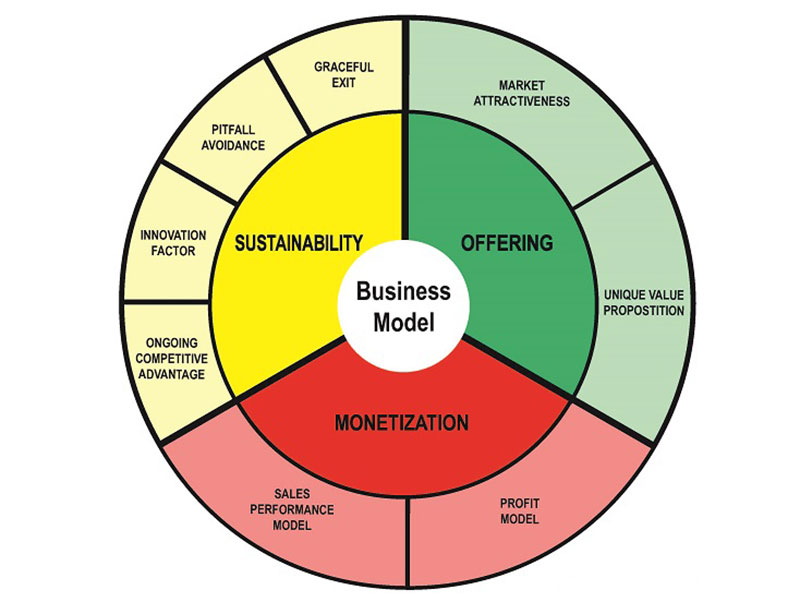

Razor and blades
This business model focuses on products that need to be replaced often. From razors to paper, and so on. In general, we are talking about products that are sold at a very high markup.
This affiliate business model relates to the advertising model. It has some differences and is used mainly online. It uses links that are embedded in content forms that act as advertising visuals. There’s a reason that many experienced SEO consultants have a side project that uses the affiliate model.
Another old and popular business model is the franchise model. You can sell the right to use your business model in exchange for some percentage of the revenues. Some of the popular entities for the franchise are C Corporation, S Corporation, Limited Liability Company (LLC) , and Sole Proprietorship.
Limited Liability Company (LLC) arrangements offer unique advantages and flexibility for businesses. A significant part of structuring your LLC effectively involves drafting a robust operating agreement. You can seamlessly acquire a free operating agreement to ensure compliance and governance across various states.
One thing in the case of LLCs is that you must pay a franchise tax and the amount of tax depends on the state where it is formed. If you have an LLC in Texas , you need to pay 0.75 percent of the business’s total gross revenue whereas an LLC in California must pay an annual tax of $800.
FAQs on business models vs business plans
What’s the difference between a business model and a business plan.
The business model is the engine under your enterprise’s hood. It details how value is created, delivered, and captured . Think customer segments and value propositions.
The business plan, by contrast, is the journey’s map— including market analysis, strategic planning, and financial projections to steer the ship toward success.
Is a Business Model More Important Than a Business Plan?
It’s not about importance; it’s about order and function . Your business model lays the foundation—identifying revenue streams and cost structures. The business plan takes this blueprint and scales it—complete with sales forecasting and operations plan—to marshall resources and navigate the business landscape.
How Often Should I Review My Business Model?
Consider the business model your playbook. Review when the game changes: significant shifts in consumer preferences, market conditions, or competition. Business models thrive on agility— it’s essential for adaptation and innovation .
Do All Businesses Need a Written Business Plan?
A written plan isn’t always mandatory, but it’s incredibly prudent for clarity and fundraising . It serves as a communication tool for stakeholders and a guide to validate your business model’s viability, making complex concepts like break-even analysis accessible.
What Key Elements Should Be in a Business Plan?
Typically, a plan will include an executive summary, marketing plan, financial plan, SWOT analysis , and much more. It’s your enterprise’s DNA—laying out strategic objectives, funding requirements, and the go-to-market strategy .
Can a Business Model Generate Revenue Without a Business Plan?
Sure, a model can generate revenue, but a plan scales it. Without a business growth plan , it’s like sailing without a compass; you might float but not necessarily in the right direction.
What Role Does Market Research Play in a Business Model and Plan?
Market research is crucial—it informs your value proposition in your business model and fuels the competitive analysis in your business plan . It’s the wind to your sails, directing towards what your target market desires and how to outmaneuver competitors.
How Detailed Should My Financial Projections Be?
Financial projections should be the North Star of your plan— detailed enough to guide but flexible to adapt. They demonstrate potential ROI, including sales forecasting and cash flow management, which are pivotal for investors.
Is the Business Model Canvas a Substitute for a Business Plan?
Think of it as an appetizer, not the main course. The Business Model Canvas gives a snapshot—great for quick pitches and ideation . Still, the comprehensive business plan is where you lay out the full banquet for stakeholders to feast upon.
How Do I Adjust My Business Model and Plan for Market Changes?
Regular checkpoints enable reevaluation. Market fluctuations demand responsive risk management and strategic pivots . Listen to the heartbeat of your business—customer feedback, sales trends, all while keeping a steady eye on the competitive landscape . Adjust as necessary to maintain alignment with your business objectives and ensure long-term viability.
How does a business plan help a company execute its business model?
The business model of a corporation can be carried out according to a plan. It details the precise actions the business will take to accomplish its objectives, including marketing and sales strategies , monetary forecasts, and operational plans.
A business plan assists a company in staying on track and making wise decisions by offering a comprehensive blueprint.
Can a startup have a solid business model without a detailed business plan?
Absolutely, a startup can succeed without having a thorough business plan. But a thorough business plan can serve as a guide for carrying out that model and assist the business to avoid frequent mistakes.
However, enlisting the expertise of business plan consulting professionals can provide invaluable insights and strategic analysis, enhancing the effectiveness of the model and helping the business navigate potential pitfalls with confidence. A well-crafted business plan can be a powerful tool in steering the startup toward long-term success and sustainable growth.
A thorough plan may be necessary to obtain financing from lenders or investors.
Navigating the labyrinth where business model vs business plan intersects, one thing stands clear: intricacy meets necessity. The blueprint and roadmap duo – each a beacon on this entrepreneurial odyssey.
Imagine the business model : a living organism, continuously adapting, urging market analysis to stay abreast, always fine-tuning the value proposition . The business plan : a masterful strategic planning tome, evolving yet steady, with financial projections serving as lighthouses amidst entrepreneurial seas.
In sum, the two are not adversarial but complementary – dancers in a tango of commerce where one leads and the other follows. Whether sculpting the revenue streams of tomorrow or drafting an operational plan to conquer today’s market, both are invaluable. They are quintessential narratives in the grand story of strategic foresight and operational vision . Hold them close; they will guide through tumultuous and tranquil waters alike.
If you enjoyed reading this article on business model vs business plan, you should check out this one about Steve Jobs’s leadership style .
We also wrote about a few related subjects like accelerator vs incubator , startup funding stages , how to value a startup, IPO process, IPO lockup period , risk assessment matrix , business process modeling , and business model innovation .
- Recent Posts
MVP Tests You Can Do To Validate Your Idea

What Is A Project Management Framework? (Must Read)
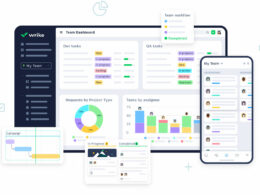
The Top Project Management Software For Freelancers

Gap Analysis: What It Is And Why It’s Important
| Save $5850+ Today! |
- Business Ideas
- Super Guides
- Innovation Report
- Canvas Examples
- Presentations
- Spreadsheets
- Discounted Bundles
- Search for:
No products in the cart.
Return to shop
What is the difference between Business Model and Business Plan?
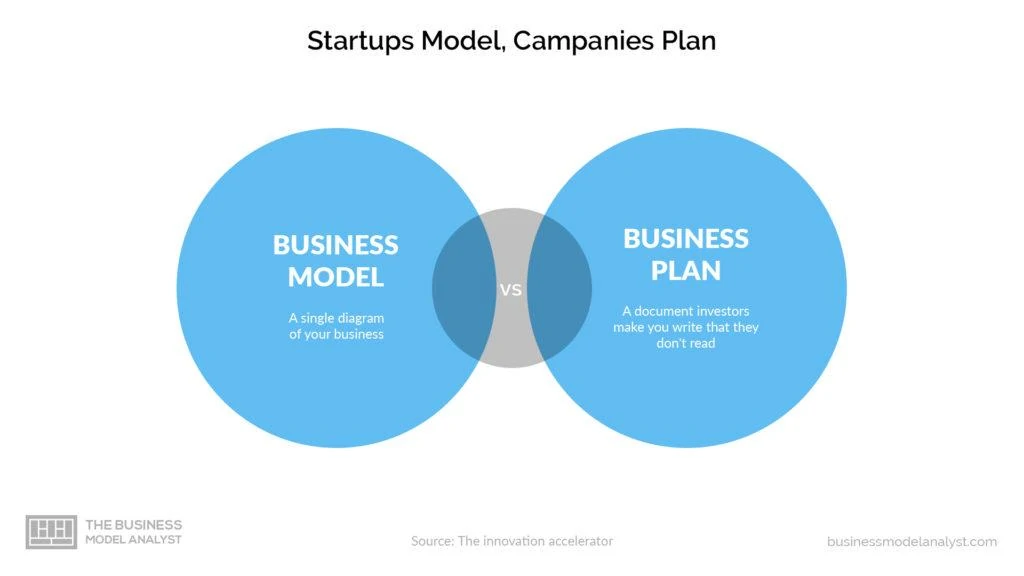
It’s very common to make confusion on what’s the difference between Business Model and Business Plan. But, in fact, they are similar only in name. Their functions and purposes are quite different and, actually, complementary. While the business model refers to a one-page representation of how a company creates, delivers, and captures value, the business plan is an in-depth description on a long textual document form about how your company is structured and plan to achieve strategic and financial objectives. This business plan is a document that contains every data of the business – usually including its model. Let’s separate them both, to make it simple.
Business Model Definition
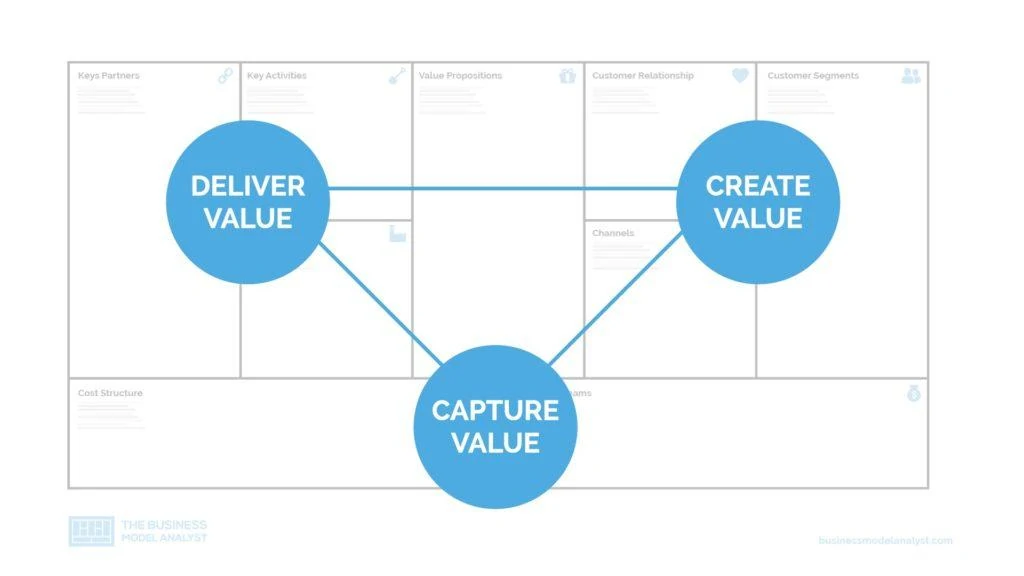
Your company’s business model is all about the way a company creates, delivers, and captures value. For example, a restaurant franchise is a business model. A Software-as-a-Service is another one. A razor-and-blade , a subscription company , a Freemium internet tool, a e-commerce marketplace . Each of that is a business model, with its own peculiarities. What it’s commonly mistaken with the business plan is not the business model itself. It’s, indeed, the business modeling tool . And this tool provides a base to design a business model. It’s, in fact, by modeling your business through this kind of tool that you’ll be able to identify your they main construction blocks of a business, who they relate to each other and combine to form a unique strategy. It’s with the business model tool that you may identify the key resources for your business to succeed, which key activities it must perform, who it has to interact with, and by which means and channels . Usually, this business model tool is a framework, made up of a single page, that allows you to recognize your own business under several perspectives. According to the type of business, you may take a look at different modeling options, such as Business Model Canvas , Value Propositions Canvas, Lean Canvas , and others. Each of them fits a different purpose. For example, if your business is brand new, the Business Model Canvas is likely to be the better option. On the other hand, for early validation of your startup, the Lean Canvas must be the most appropriate. And, to pivot your product, it’s a good idea to check the Value Proposition Canvas. In short, if you aim to understand your business better, from inside, or make predictions for growing your venture, then your need to work on your business model, not make a business plan. So, now, let’s check what the business plan is for.
Business Plan Definition
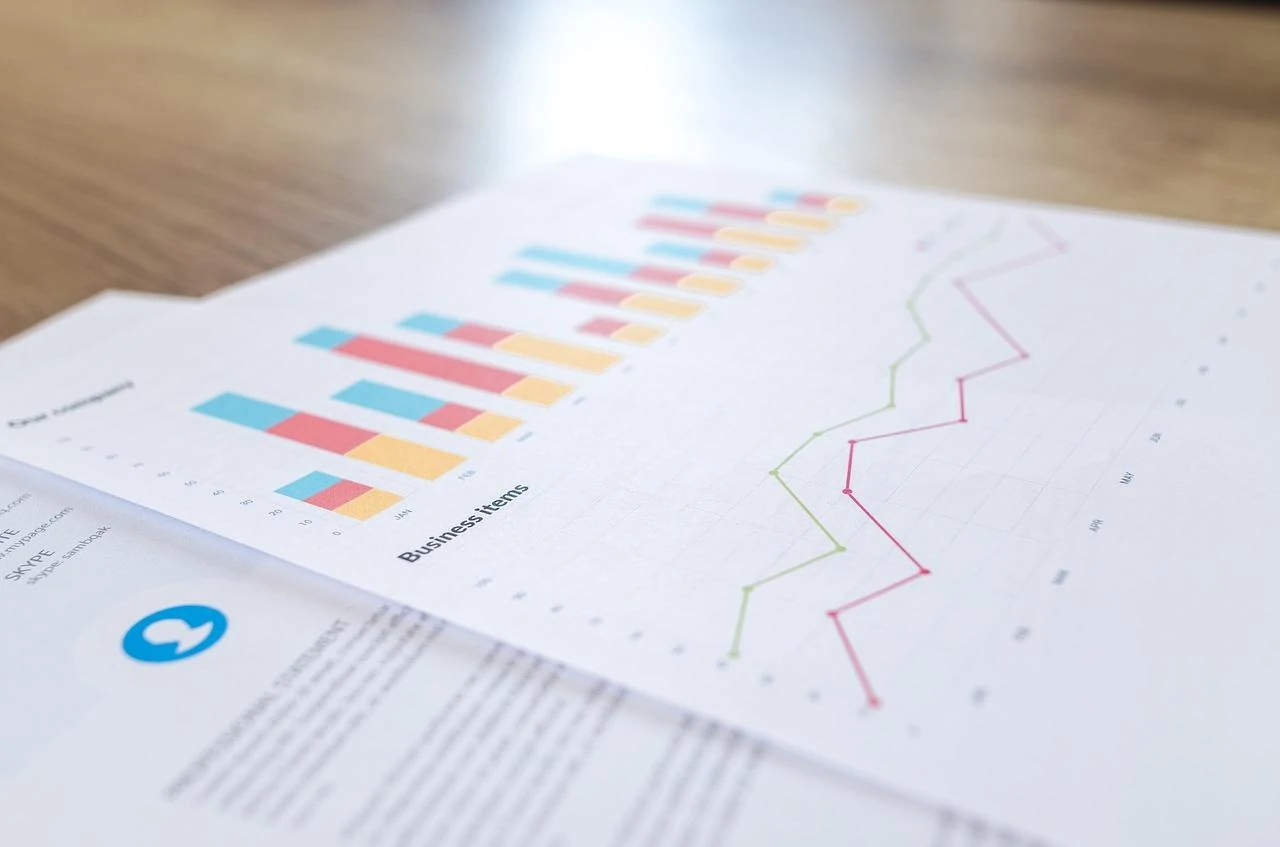
A business plan is a written document that contains detailed information of the business, product/service, market, and the entrepreneur vision for the company’s future. It is basically the most accurate portrait of the field, products and services, customers, competitors, suppliers, all the operational and financial goals of the company, its marketing and sales strategy. Its purpose is to display the strengths and weaknesses of the business and to project the gains and losses of the organizations, in order to identify the viability and sustainability of the idea. The business plan is often a long document, made up of several pages. In general, it contains:
- Table of Contents;
- Executive Summary;
- Business and product/service description;
- Market analysis;
- Competitive Analysis;
- Marketing Plan;
- Operational and Management Plan;
- Financial Plan;
- Supporting data and documents.
The goal of the business plan is to determine whether your idea is sustainable or not. It also shows the weaknesses to be repaired, as well as the strengths to be potentialized. It is a kind of script, to reduce the chance of failure. The business plan is a core document if you are looking for partners, in order to demonstrate profitability. Its focus is, indeed, to provide executives, investors, and any other stakeholders a full overview of the business. So, it is especially important when you are seeking loans, sources of financing, and investments. It is the best way to demonstrate that your business is trustworthy and solid enough for credit.
Business Model vs Business Plan
the difference between Business Model and Business Plan lies in key points like how they should be developed, where should the focus be, how to organize ideas and what are their main objectives.
Business Models and Business Plans are important documents to help you plan and organize your business strategy. It can be either a document for early-stage companies that need to validate hypothesis or big companies that need to plan ahead, capture investment or even make an IPO .
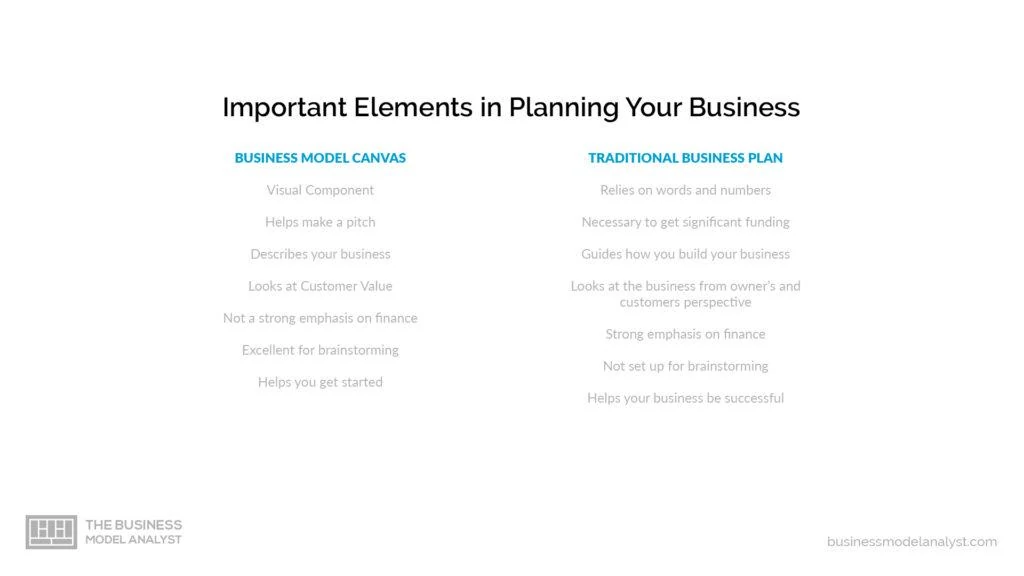
Whatever the case is, it is very important to understand that these are different terms, with different purposes and have different tools to develop them. To summarize here, the key terms that are commonly confused between each other:
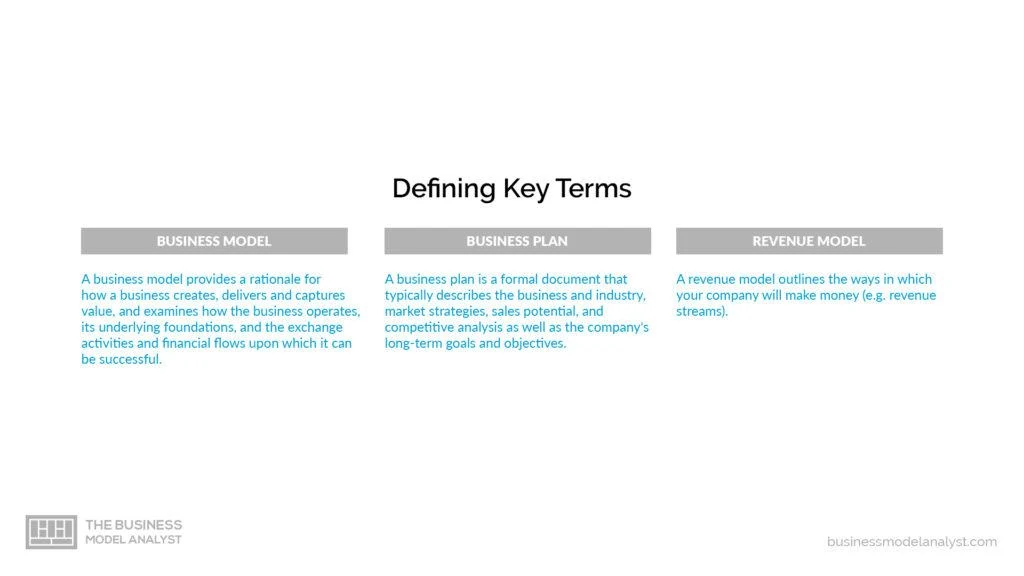
Business model – provides a rationale for how a business creates, delivers and captures value, and examines how the business operates, its underlying foundations, and the exchange activities and financial flows upon which it can be successful. Business Plan – a formal document that typically describes the business and industry, market strategies, sales potential, and competitive analysis as well as the company’s long-term goals and objectives. Revenue Model – Outlines the ways in which your company will make money (e.g. revenue streams). Did you better understand the difference between Business Model and Business Plan? Comment below!

Who is Daniel Pereira ?
I love understanding strategy and innovation using the business model canvas tool so much that I decided to share my analysis by creating a website focused on this topic.
More About Me
Related Posts
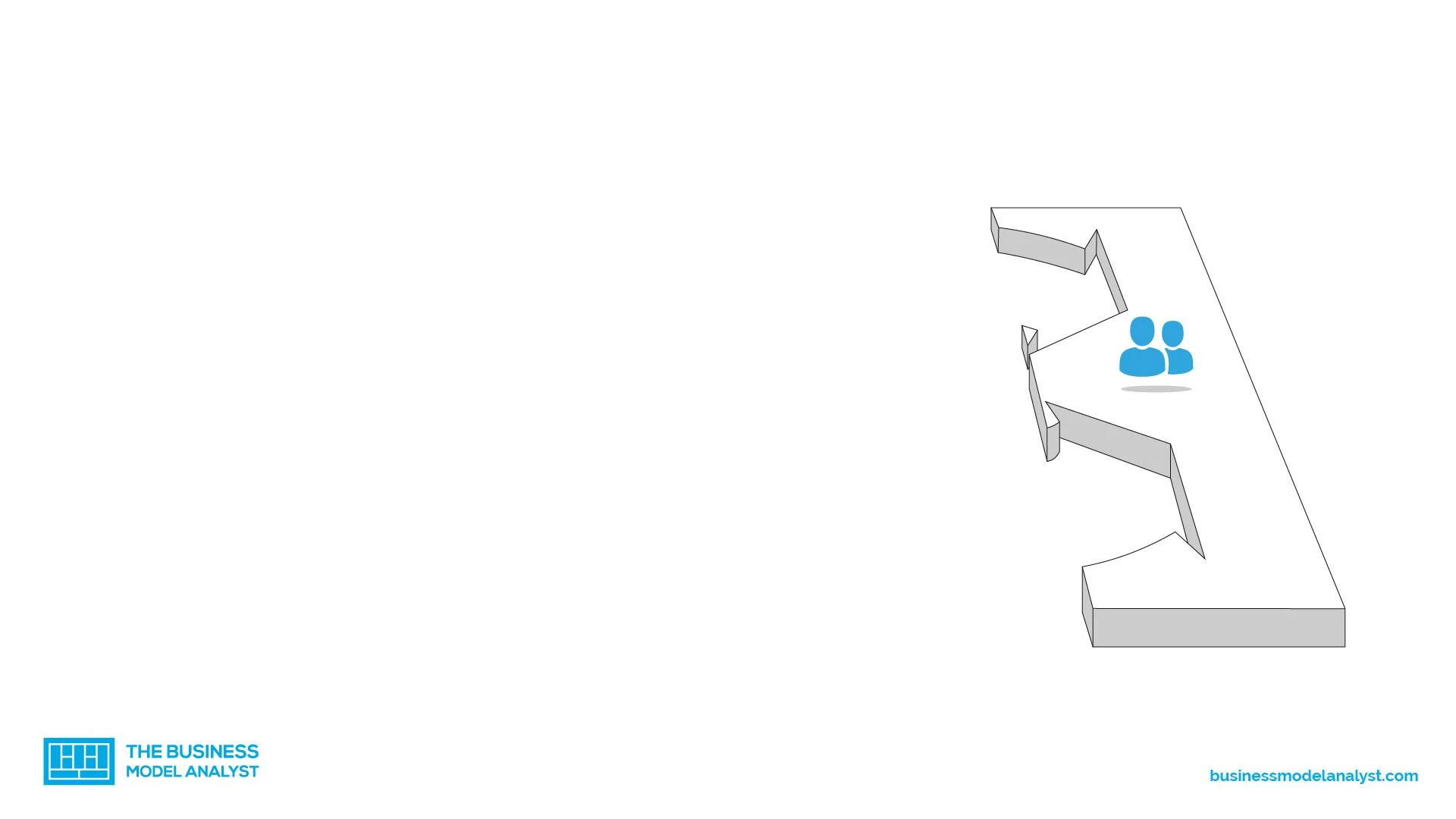
Customer Segments
Customer Segments is the first and most important building block of the Business Model Canvas. [...]
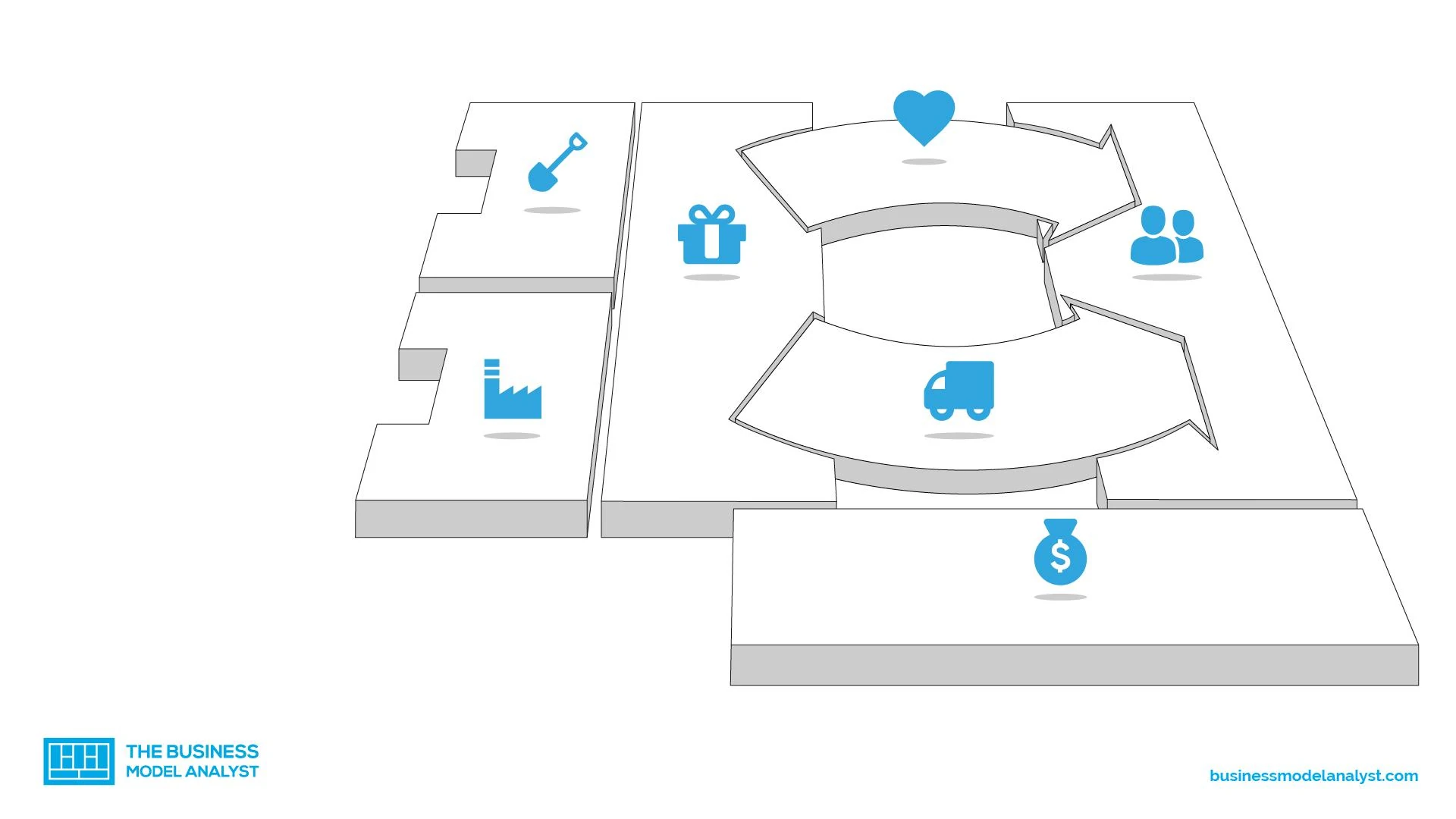
Key Activities
If the immediately preceding component of the Business Model Canvas is the Key Resources, which [...]
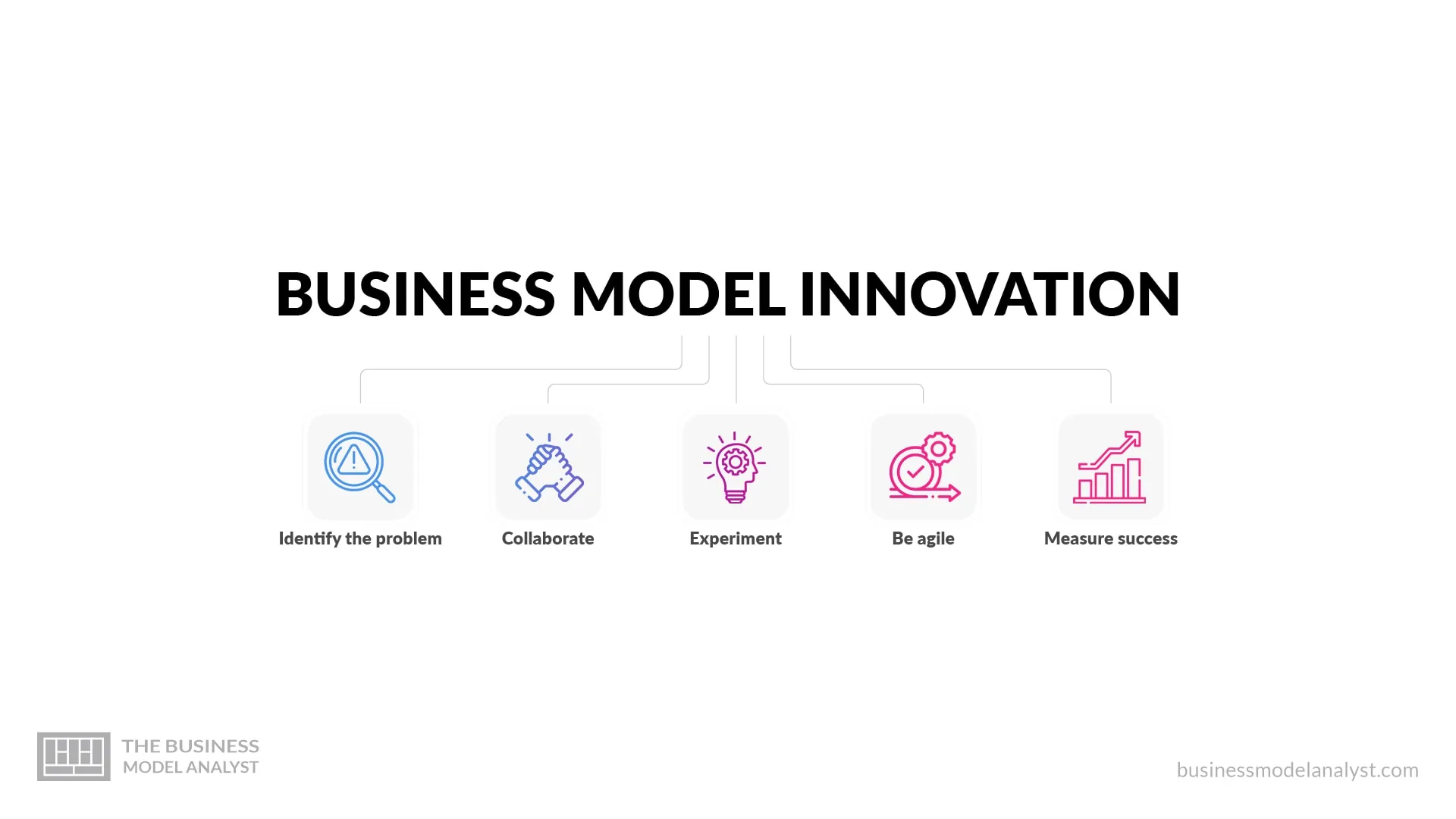
Business Model Innovation: Strategies and Examples for Successful Transformation
Business model innovation is the art of enhancing advantage and value creation by simultaneously changing [...]
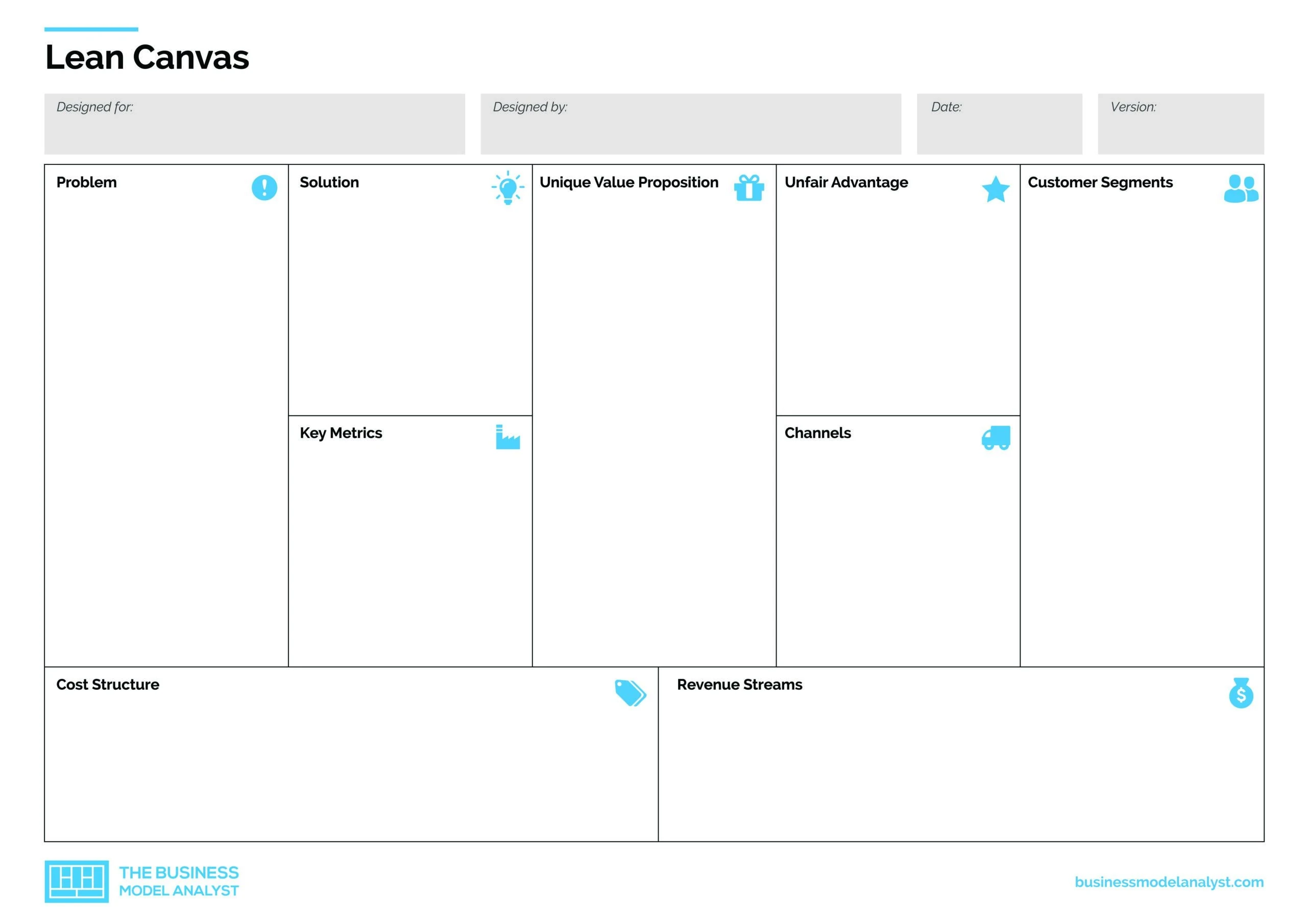
What is Lean Canvas?
The Lean Canvas is a business modeling tool created to help deconstruct a startup idea [...]
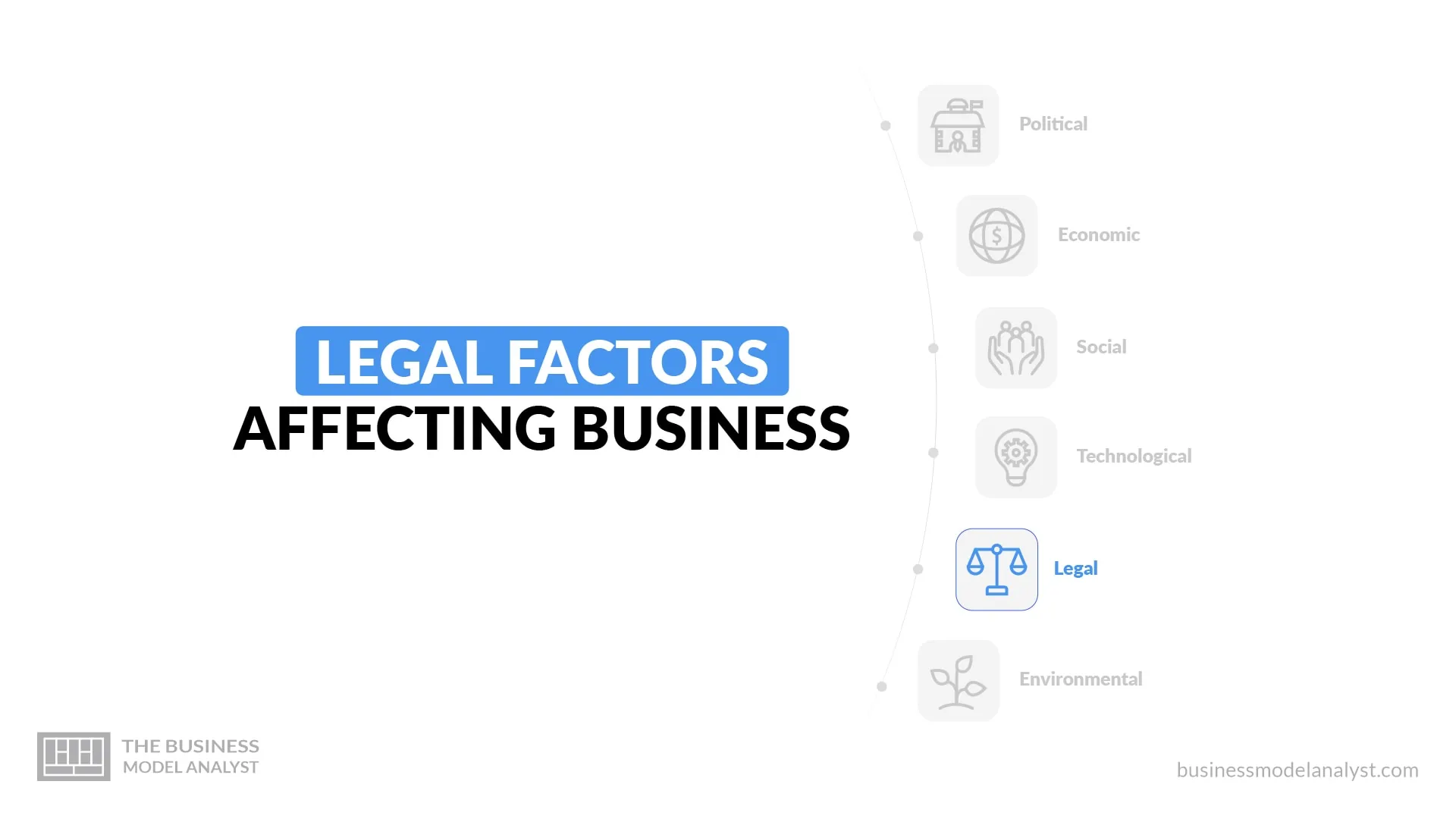
Legal Factors Affecting Business
When businesses analyze their external environment, PESTLE analysis is a standard tool that can be [...]
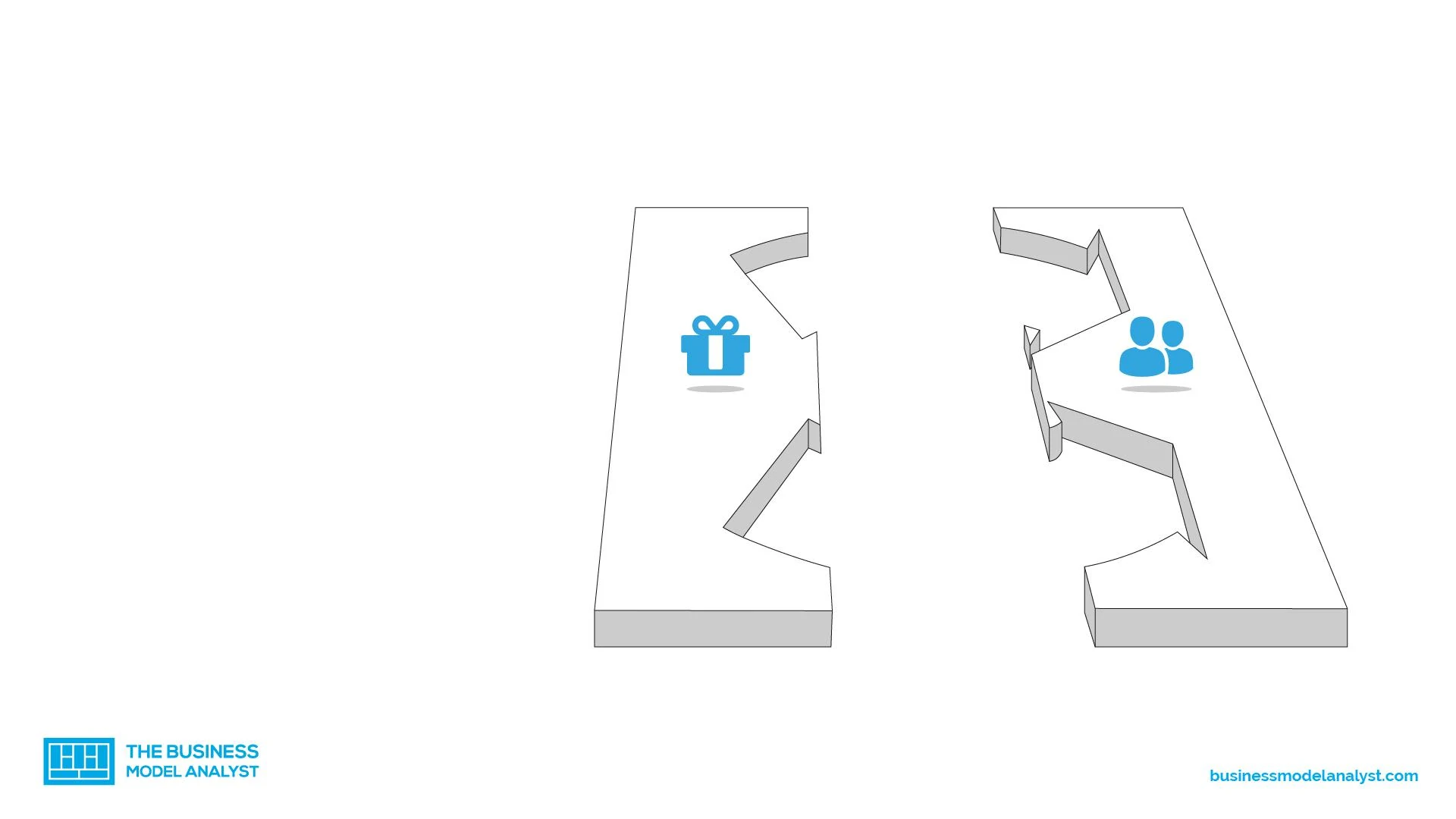
Value Proposition
Developing your Value Proposition should always be the second step in designing a Business Model. [...]
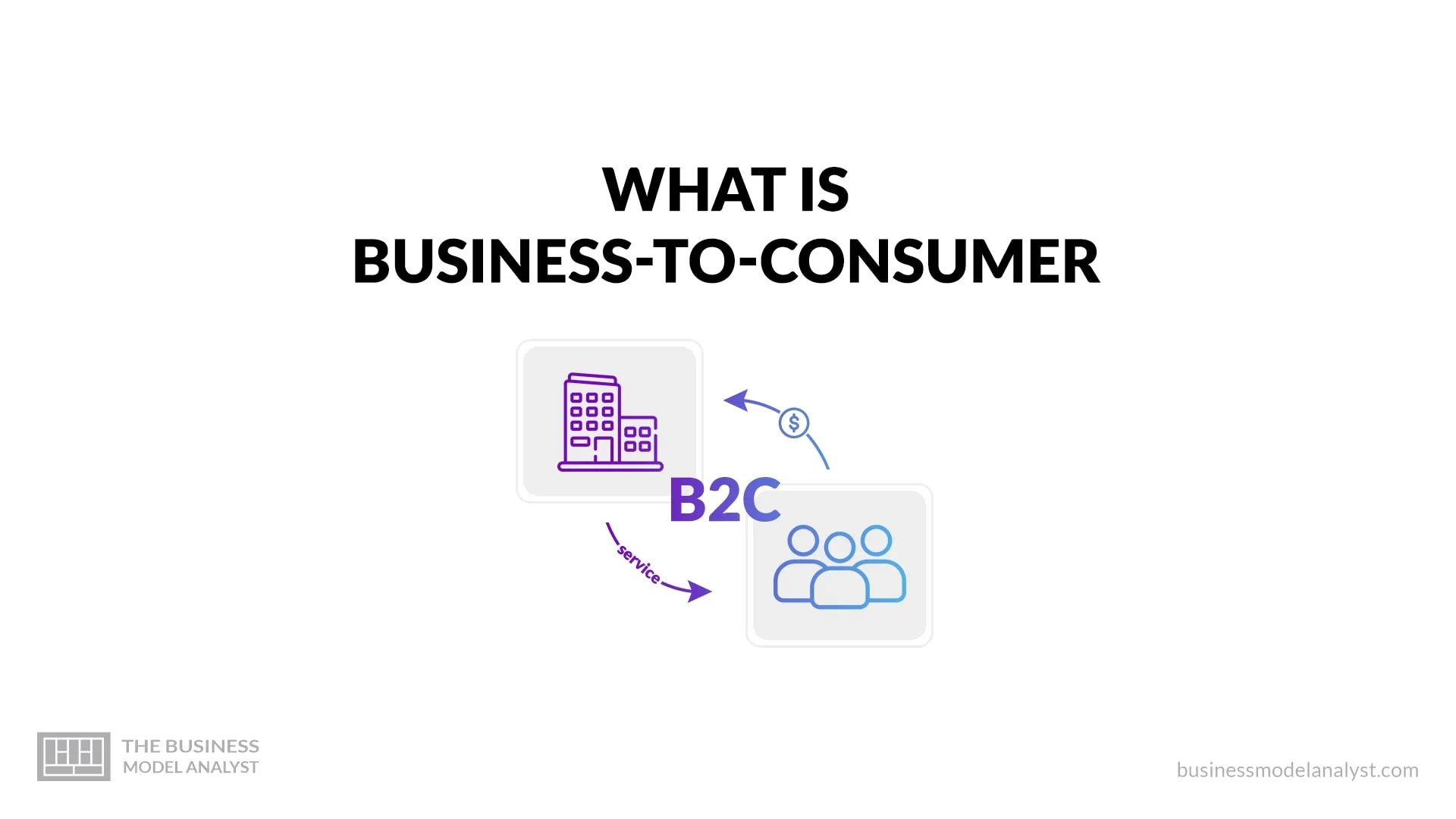
What Is Business-to-Consumer (B2C)? Types and Examples
Business-to-Consumer (B2C) refers to the transactions between a business and individual consumers. In other words, [...]
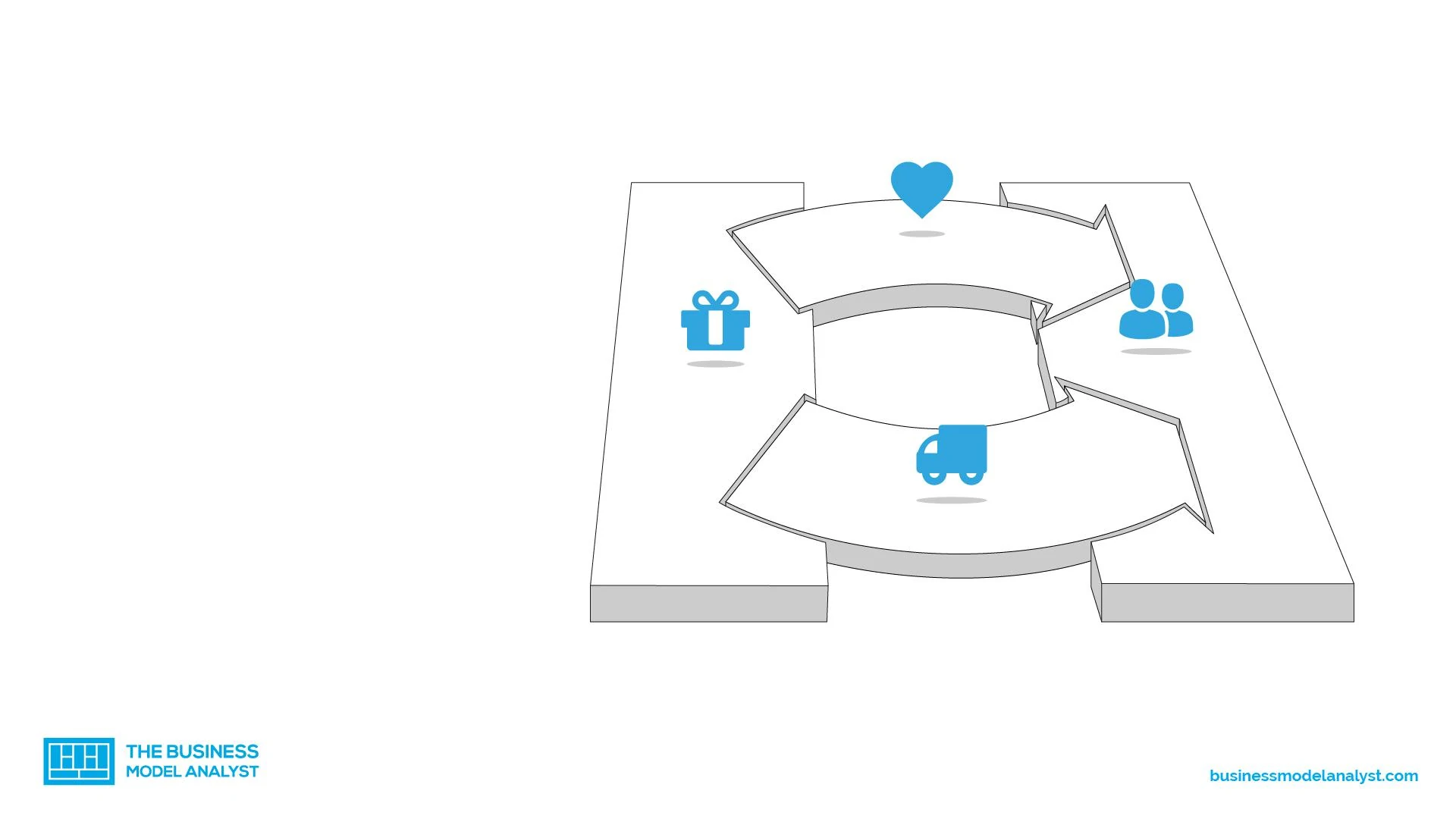
Customer Relationship
The Customer Relations block of a Business Model intrinsically depends on the first block developed, [...]
1 thoughts on “ What is the difference between Business Model and Business Plan? ”
Very interesting. Concise and comprehensive at the same time.
Leave a Reply
Your email address will not be published. Required fields are marked *
RECEIVE OUR UPDATES
Username or email address * Required
Password * Required
Remember me Log in
Lost your password?

Business Model vs. Business Plan
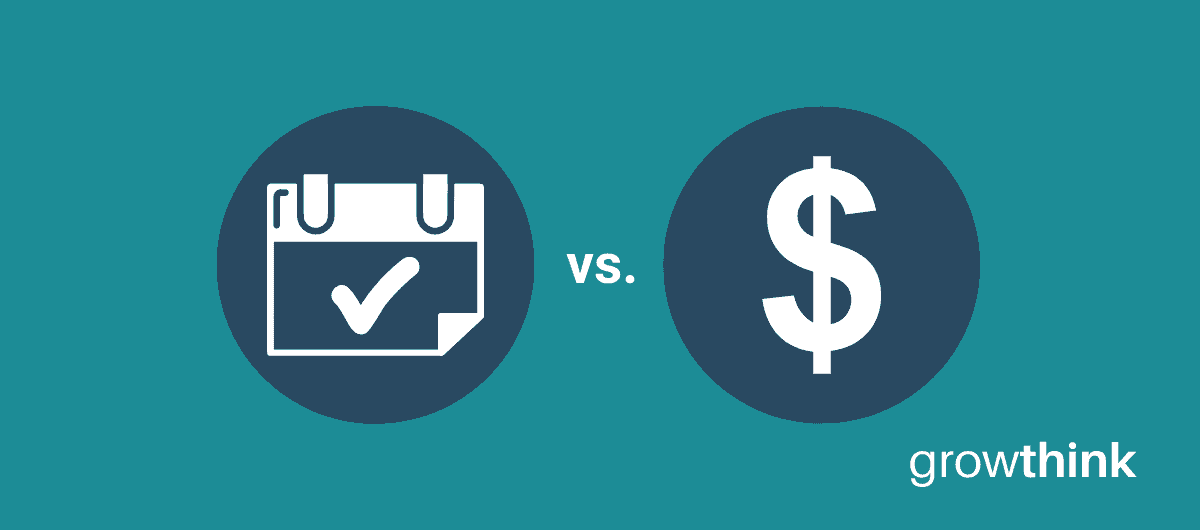
You might be wondering what the difference is between a business plan and a business model. The truth is, they are different things with different purposes.
The main difference between a business plan and business model is that a business plan outlines your goals and strategy to grow your company, while a business model shows you how to generate revenues. Read on to learn more about this subject, including what types of business models there are and how to figure out which type best suits your situation.
What is a Business Model?

What is a Business Plan?

What Should Be Included in a Business Plan?
During the business planning process, especially if you are trying to attract investors, there are 10 essential elements of a business plan which you must include as follows:
- Executive Summary
- Company Description
- Customer Analysis
- Market Analysis
- Competitive Analysis
- Marketing Strategy & Plan
- Operations Plan
- Management Team
- Financial Plan (Performance & Forecasting)
For each of these sections, you should provide an in-depth description of your research, analysis, and expected financial performance. You can learn more about the components of a business plan and review our repository of 100+ business plan examples to help you get started on writing your own business plan.
What Should Be Included in a Business Model?
A business model should include the details of every way in which your business makes money. It’s important not to leave anything out, even if it seems insignificant. Every dollar counts!
How Does a Business Model Differ from a Business Plan?
Business models outline how your company generates revenues. On the other hand, business plans focus on the specifics of how the business will achieve sales and growth over a given period of time, typically five years. Business plans discuss your business model among other things and are critical if you want to gain investments to grow your business.
The business model strategy is very different from a business plan. While they overlap a bit, the critical difference is that a business plan outlines the goals and business strategy while the basic business model shows you how to make money.
Your needs will change over time so it’s important to be able to switch between these two documents when needed. For example, if your goal is long-term growth then you may want more information about what type of strategy would work best for this situation or which resources might help get there faster. On the other hand, if you’re looking for some immediate income then paying attention to the various types of models available could give you an idea of where to start with generating enough sales quickly without too much cost upfront.
How to Finish Your Business Plan in 1 Day!
Don’t you wish there was a faster, easier way to finish your business plan?
With Growthink’s Ultimate Business Plan Template you can finish your plan in just 8 hours or less!
OR, Let Us Develop Your Plan For You
Since 1999, Growthink’s business plan consulting team has developed business plans for thousands of companies who have gone on to achieve tremendous success.
Click here to see how our professional business plan consultants can create your business plan for you.
Other Helpful Business Plan Articles & Templates

ZenBusinessPlans
Home » Business Model
Business Model Vs Business Plan – What is the Difference?
Do you want to know the difference between a and a business plan? If YES, here is a detailed comparison and analysis and how each is used. A business plan and a business model look amazingly similar like two peas in a pod, but they are equally different, just like two peas in a pod. They are both part of each other but play different roles thus making the line between them seem dim.
A business plan and a business model both contain , customer retention strategy, revenue generation strategies, and overall, they are used to outline the vision of the company. So what then differentiates a business plan from a business model and how can you make a clear distinction of both?
Business Model Vs Business Plan
What is a business model.
A business model is a company’s outlined plan for making profit. It identifies the products or services the business will sell, the target market it has identified , and the expenses it anticipates. A business model also shows the destination of the business, how it is meant to work, and what it is meant to become.
A business model ascertains how your business makes money. It identifies the services that your customers value and shows how funds are generated for the services your business renders to your customers. A small business can have more than one method of generating income, and it is the duty of the business model to simplify the money process by focusing on the largest income generator.
For instance, a gas station sells gas to customers, but it also provides other services such as a car wash, lube station, etc. The business model only recognizes the majority income generator, which is the sale of gas. Therefore, the business model will reflect the sale of gas to the customer, which generates income at the time of the customer’s purchase.
The business model summarily simplifies and makes revenue-generation easy to understand by focusing on the key generator, highlights exactly how you intend to acquire, retain, and service your customers. The business model can come in different distinct models like:
- Franchise model
- Direct sales model
- Advertising model
- Subscription based model
- Lowcost model
- Freemium model
- Affiliate model
- Production model
The business model is basically at the center of the business plan, as it describes how the company is positioned within its industry’s value chain, and how it organises its relations with its suppliers, clients, and partners in order to generate profits. The business plan translates this positioning in a series of strategic actions and quantifies their financial impact.
What is a BUSINESS PLAN
A business plan is a formal written document that contains business goals, the methods on how these goals can be attained, and the time frame within which these goals need to be achieved. A business plan acts like a GPS. It shows you the roadmap of how you intend to get to your destination as a business person.
It highlights the market opportunities you want to take advantage of, the existing competition, the strength and experience of your team, a detailed description of the products and services you intend to offer, and a roadmap that shows exactly how you intend to execute your plans in the market.
A business plan is a document presenting the company’s strategy and expected financial performance for the years to come.
The business plan provides the details of your business. It takes the focus of the business model and builds upon it. It explains the equipment and staff needed to meet the details of the business model. It also explains the marketing strategy of your small business, or how your business will attract and retain customers, and deal with the competition.
Furthermore, the business plan explains the financial stability of your small business at a particular point in time, as well as in the forecasted future. Overall, the business plan supports the business model and explains the steps needed to achieve the goals of that model
The business plan pays close attention to your goals, projects the cash flow, profits or losses, and ultimately shows how long and what would be required to enable the business break-even.
A sample structure of a business plan is seen below:
- Executive Summary
- Business Description
- Service or Product Line
- Market Analysis & Strategies
- Organization & Management
- Funding Request
- Financial Assumptions
- Financial Projections
Differences Between a Business Plan and a Business Model
Some of the major differences between a business plan and a business model are outlined thus;
- A business model aims at highlighting the profit making potentials of a business, while a business plan highlights every aspect of the business.
- The business plan explains in details the steps needed to achieve the goals of your business model.
- Another difference is that business plans are usually written at the beginning of a business or a business initiative, while a business model is relevant at any time, and can be written at any time.
- Again, business models are less expensive to put together, and may represent a fictional future goal. As a goal, they may be both complete and entirely unprofitable or even infeasible, quite unlike your business plan.
- A business model is centered around Value; while business plan is centered around Resources. The business plan thus lays out how to manage these resources over time to materialize the business model, grow and scale the business.
- A model explains how you will make money: for example, by selling advertising, by earning a commission, by adding a markup to services, working with partners, selling direct, charging by the hour, with additional services, etc. While a business defines specific activities, it includes timeframes, budgets, owners, dependencies and impact.
More on Business Model
The Differences Between a Business Plan & Business Model
Every successful business starts with a concept, a plan and a product or service that customers are willing to pay money to obtain. Business strategies are never conducted in a vacuum, however, and for a business to be successful, there must be a business plan and a business model generated. These two terms are unfortunately used interchangeably, but in reality, they are two very different documents that cannot exist without one another. It is essential that a business owner understand the use of a business model vs a business plan.
Business Plan vs. Business Model
At its simplest, a business plan is a written description of the future of a business. It's a document that not only gets a business concept on paper but also outlines the people and steps that will be involved to lead the business to success. The business plan is where you discuss the industry and the need for a particular product or service, the business structure and how you will achieve success.
Advertisement
Article continues below this ad
More For You
How to install a dynex web camera capture device, what is a strategic business plan, business plan vs. business model, the importance of a business plan, the chief elements of business models.
The business plan also talks about the market in which the business will operate, lays out the competition and what the plans are to position the business as a leader. Lastly, the business plan lays out the ever-important financial plan, discussing things such as income and cash flow, loans and obligations and when and how investors can expect to see a return.
A business model, on the other hand, is a business's rationale and plan for making a profit. If the business plan is a road map that describes how much profit the business intends to make in a given period of time, the business model is the skeleton that explains how that money will be made. A model covers everything from how a company is valued within an industry to how it will interact with suppliers, clients and partners to generate profits.
There are several different kinds of business models. A software company, for instance, might be based on a subscription model, which generates revenue from customers that renew subscriptions annually for a license to use the software. An example of an accessories model would be a razor company or computer printer company that guarantees future income through the sale of razor blades and printer cartridges.
Interdependence
While it's true that a business plan and business model are two separate documents, the reality is that the business plan cannot live without the business model. While a business plan can describe the structure of a business's financial goals, the business model explains how the money will flow - from customer generation to marketing to sales, and finally, to customer retention. The business model must have room to grow and adapt. Consequently, if the business model changes, so must the business plan.
The Need to Adapt and Change
One of the most prominent examples of a business model changing is currently occurring in the computer software industry. About 10 years ago, the way to purchase software programs was to go to the store and buy a CD-ROM to download the application and license to your computer. Today, the advent of cloud-based subscription services makes it possible for customers to download software and renew licenses remotely over the internet.
This transition to the Software as a Service (SaaS) subscription model has caused many businesses to change their plans. Companies affected by this shift include computer companies that no longer need to build machines with CD-ROM drives in them and software companies that no longer need to make or sell software in physical form.
As a result, software companies have had to change their business plans, including costs and infrastructure costs for cloud storage and bandwidth, as well as maintain a cloud operations team 24 hours a day, seven days a week. These ongoing efforts can increase costs and reduce margins, but they're a necessary adaptation to changing customer needs and market technology with the new business model.
- The Business Plan Shop: Business Model Vs. Business Plan
- Wikipedia: Business Model
- Harvard Business Review: What is a Business Model?
- Entrepreneur: An Introduction to Business Plans
John began his 25-year career in the editorial business as a newspaper journalist in his native Connecticut before moving to Boston in 2012. He started fresh out of college as a weekly newspaper reporter and cut his teeth covering news, politics, police, and even a visit from a waterskiing squirrel. He went on to work in the newsrooms of several busy daily newspapers, and developed a love for detailed storytelling, focusing on the lives and diverse tales that all people have to offer. Moving on to the business arena later in his career, John worked as a managing editor for a healthcare publishing company and a technology software firm. He’s used his background in broadcast journalism as a webinar moderator, voice-over specialist, and podcast narrator. John also holds a master’s degree as an elementary school teacher and spent 10 years working with and tutoring students of various ages and backgrounds, including multilingual students and students with special needs of all ages.
Entrepreneur Training
- Ask An Expert
Entrepreneur Library
The Difference Between a Business Model and a Business Plan
By Samantha Garner, GoForth Institute
When you’re getting ready to start your small business, you might have heard that you should start with a business plan, or a business model. That’s great! But what are they, exactly, and how are they different from one another?
Business model
The business model is a blueprint for the business, outlining how you’re going to run your business, and how you’re going to make money.
There are five components in a business model:
- Business concept: A short description of an opportunity, including a description of your average customer; the benefit of your product or service to the customer; the product or service; and the way you’re going to get your product or service to the customer.
- Value chain position: Your business’ position on the chain of activities through which products and services pass to get from you all the way to the end user.
- Calculating customer value: An estimate of the value of the tangible benefits your customers will receive by purchasing your product or service.
- Revenue sources and cost drivers: Identifying your sources of revenue, and activities that come at a cost.
- Competitive advantage: The state when customers perceive your products or services to be superior to your competition.
Business plan
Where a business model is a blueprint, a business plan is a roadmap. A business plan is a formal written document that includes a description of the business you want to run, your business goals, and the plan for reaching those goals.
A business plan is a detailed document that contains sections such as: Marketing Plan, Startup Expenses and Capitalization, Management and Organization, Products and Services, and Operational Plan.
A business plan is usually developed around the answers to three common questions:
- Where are we now?
- Where do we want to be?
- How are we going to get there?
And is usually written for one or more of these five reasons:
- To test the feasibility of your business idea and work out any bugs on paper first.
- To develop strategies ahead of time for marketing, finance, operation and human resources, instead of when you’re in the fast-paced start-up stage.
- To get funding, such as a bank loan.
- To attract investors.
- To have a roadmap to follow for at least the first year in business.
Do you need both a business model and a business plan?
A business model and a business plan work in tandem. You need a good foundation and planning before you invest your time and money. To get started, check out our free One-Page Business Plan .
Samantha Garner is GoForth Institute's Director, Communications. Contact Samantha by email: [email protected]
Want to succeed in your small business?
Modules & Lessons
Getting Started Guides
Templates & Checklists
Business Calculators
Essential Links
Our Compassion
Our Partners
Ask an Expert
Browse Questions
Question Search
AI ASSISTANTS
Upmetrics AI Your go-to AI-powered business assistant
AI Writing Assist Write, translate, and refine your text with AI
AI Financial Assist Automated forecasts and AI recommendations
AI Research Assistant Your go-to AI-powered research business assistant
TOP FEATURES
AI Business Plan Generator Create business plans faster with AI
Financial Forecasting Make accurate financial forecasts faster
INTEGRATIONS
QuickBooks Sync and compare with your QuickBooks data
Strategic Planning Develop actionable strategic plans on-the-go
AI Pitch Deck Generator Use AI to generate your investor deck
Xero Sync and compare with your Xero data
See how easy it is to plan your business with Upmetrics: Take a Tour →
AI-powered business planning software
Very useful business plan software connected to AI. Saved a lot of time, money and energy. Their team is highly skilled and always here to help.
- Julien López
BY USE CASE
Secure Funding, Loans, Grants Create plans that get you funded
Starting & Launching a Business Plan your business for launch and success
Validate Your Business Idea Discover the potential of your business idea
E2 Visa Business Plan Create a business plan to support your E2 - Visa
Business Consultant & Advisors Plan with your team members and clients
Incubators & Accelerators Empowering startups for growth
Business Schools & Educators Simplify business plan education for students
Students & Learners Your e-tutor for business planning
- Sample Plans
WHY UPMETRICS?
Reviews See why customers love Upmetrics
Customer Success Stories Read our customer success stories
Blogs Latest business planning tips and strategies
Strategic Planning Templates Ready-to-use strategic plan templates
Business Plan Course A step-by-step business planning course
Help Center Help & guides to plan your business
Ebooks & Guides A free resource hub on business planning
Business Tools Free business tools to help you grow
Business Model vs Business Plan What’s the Difference?

Free Business Model Canvas Template
- January 2, 2024
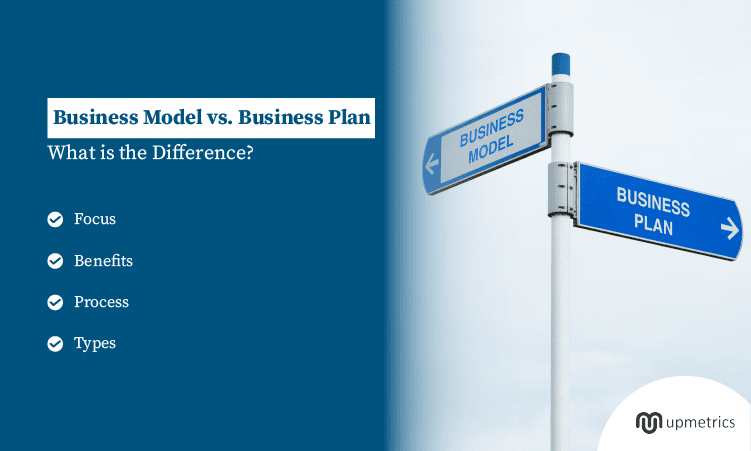
Business plan, business model, strategies, financial forecasts, and whatnot!
Starting a business means encountering new terms every day, but not exactly knowing when to use what!
Two such terms are business plan and business model. People often use them interchangeably, and it’s okay if you do too. Today we’ll change that so you know which to use when.
In this article, we’ll conduct a thorough business plan vs. business model comparison to understand their meanings and know their purpose.
So, let’s kick-start this journey now.
What is a business model?
A business model is a mechanism that directs how you create, deliver, and attain value in the market; it’s the profit-generating plan of your company.
This involves identifying your value proposition, targeting specific customer segments, defining revenue streams, leveraging key resources, and forming strategic partnerships.
Simply put, it’s how you sell your product to make money.
Components of a business model
The essential elements of a business model are:
- Customer segments
- Value proposition
- Revenue streams
- Customer relationships
- Key activities
- Key resources
- Key partners
- Cost structure
What is a business plan?
A business plan is a comprehensive document that outlines your entire business operations. It covers everything from launching products and setting milestones to planning an exit strategy, detailing every step of your business journey. A business plan describes what a company does, its vision & goals, and its strategies.
Essentially, a business plan serves as a roadmap for how your business will operate, grow, and achieve success.
Components of a business plan
Here are the core components of a business plan:
- Executive summary
- Company description
- Products and services
- Market analysis
- Customers analysis
- Competitors analysis
- Marketing and sales plan
- Operations plan
- Financial plan
Say goodbye to boring templates
Build your business plan faster and easier with AI
Plans starting from $7/month

Four key differences: business model vs. business plan
Now that you know the exact meaning of a business model and business plan, it’s time to understand the difference.
Your business model focuses on optimizing the internal and external company operations to earn maximum profits. It explains your relationship with dealers, distributors, service partners, customers, and target audience.
Conversely, your business plan focuses on how you set business goals, create strategies, make predictions, and manage labor to sustain and scale your business. It also outlines your relationship with your customers, competitors, industry, and the market.
2. Benefits
Adopting the right business model(s) help you:.
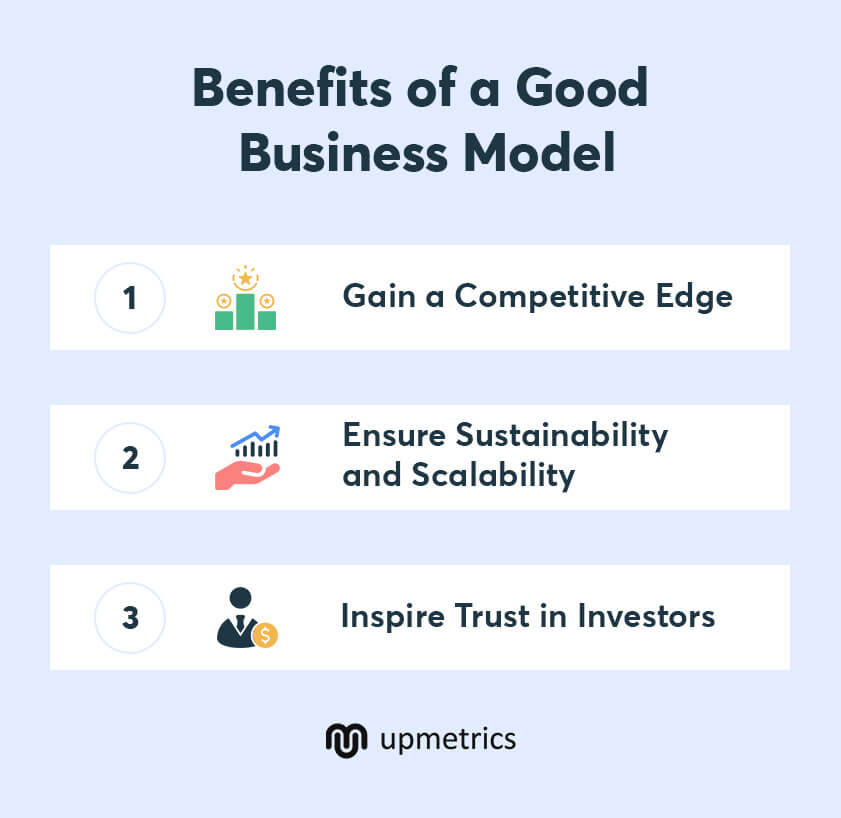
Gain a competitive edge
Incorporating a unique business model amazes your audience and attracts them to be your first-time customers. It also provides you with a competitive edge over other businesses in your industry.
Ensure sustainability and scalability
A business model pushes an entrepreneur to have monthly update meetings and plan what the next month should exactly look like. Many businesses shut down due to poor financial management, which is why a business model is required.
From economic storms to unexpected difficulties, a business model ensures both sustainability and scalability.
Inspires trust in investors
Investors know the failure rate of small businesses, which is why incorporating a clear business model provides a sense of security. They will also know that you have a strategy and what your profitability expectations are for the upcoming years.
Writing a good business plan helps you:
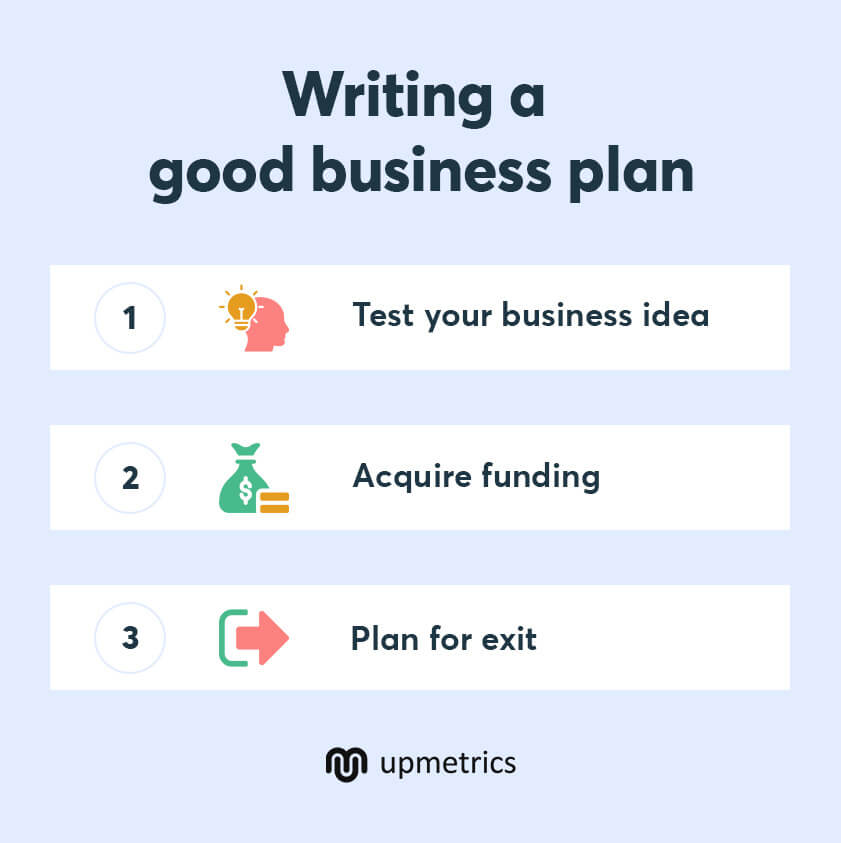
Test the viability of your business idea
A business plan defines the target customers and their willingness to pay for your product or service. This way, your business idea will be validated, helping you decide whether to move forward with it or not.
Acquire funding
If you want funds from banks, investors, or other parties, then you’ll require proper financial details like goals, plans, and projections. A good business plan will help you impress investors.
Plan for exit
A business plan includes strategies and a timeline to accomplish any task, which helps in planning your business’s exit too. While handing over your business or closing it directly, meeting the financial goals is also important—which are very specific in the business plan.
Other advantages of writing an ideal business plan include:
- Identifying market gaps and threats
- Organizing and planning business processes
- Forecasting financial estimates and market trends
- Creating strategies to achieve objectives
While adopting a business model
First, consider the scalability of your business, then measure the value you offer. List down your competitors, segment your customers, see the market potential, and then choose a business model.
Here are other points to consider:
- Aim to receive validation from prospective customers
- Modify assumptions to match customer preferences
- Focus on the current financial position
While creating a business plan
Answer a few questions first, like where you think your business will be in 10–15 years, what’s your expected income, or what are your projections.
- Aim to find factual information through research
- Support assumptions through data from customer analysis
- Focus on the current and future financial position
Business models
A business model outlines how a company creates, delivers, and captures value. Understanding different types of business models can help identify the best approach for their businesses, ensuring growth. Some of the types of business models are:
- Subscription model
- Freemium model
- E-commerce model
- Advertising model
- Franchise model
Business plans
Each type of business plan serves a unique role, whether it’s for a startup looking to enter the market, an existing business planning for growth, or a company looking to improve its operational efficiency. Here is an overview of the most common types of business plans:
- Startup business plan
- Lean business plan
- Traditional business plan
- Internal business plan
The bottom line
There’s no standard answer for business plan vs. business model; the choice entirely depends on your business’s specific needs and objectives.
Additionally, planning is an ongoing process. You can’t create a business plan or a business model and rely on that for years to come!
So, to keep your business model and business plan updated, explore a business plan app like Upmetrics . It has a business model canvas template, sample business plans, and an AI assistant to help you plan as many times as you need.
Build your Business Plan Faster
with step-by-step Guidance & AI Assistance.
Frequently Asked Questions
Can i write a business plan without a business model.
No, a business plan is like a roadmap for your business—but it also needs direction. This direction comes from a business model. A business model explains how you’ll make money by defining its target market, value proposition, revenue streams, cost structure, and distribution channels. So, writing a business plan after making a business model is advisable.
Is my business model enough to secure funding?
Well, no! For funding an investor would want to know everything about your business like the management team, competitive landscape, industry analysis, financial projections, and more. So, having a business plan for funding is necessary.
When should I create a business model and business plan?
Create a business model and a business plan when you’re starting a new business or launching a new product or service. However, you need to create or alter both documents if there are any shifts in the current business operations.
About the Author
Upmetrics Team
Upmetrics is the #1 business planning software that helps entrepreneurs and business owners create investment-ready business plans using AI. We regularly share business planning insights on our blog. Check out the Upmetrics blog for such interesting reads. Read more
Reach Your Goals with Accurate Planning

What Is a Business Model?
by Andrea Ovans

Summary .
A look through HBR’s archives shows that business thinkers use the concept of a “business model” in many different ways, potentially skewing the definition. Many people believe Peter Drucker defined the term in a 1994 article as “assumptions about what a company gets paid for,” but that article never mentions the term business model. Instead, Drucker’s theory of the business was a set of assumptions about what a business will and won’t do, closer to Michael Porter’s definition of strategy. Businesses make assumptions about who their customers and competitors are, as well as about technology and their own strengths and weaknesses. Joan Magretta carries the idea of assumptions into her focus on business modeling, which encompasses the activities associated with both making and selling something. Alex Osterwalder also builds on Drucker’s concept of assumptions in his “business model canvas,” a way of organizing assumptions so that you can compare business models. Introducing a better business model into an existing market is the definition of a disruptive innovation, as written about by Clay Christensen. Rita McGrath offers that your business model is failing when innovations yield smaller and smaller improvements. You can innovate a new model by altering the mix of products and services, postponing decisions, changing the people who make the decisions, or changing incentives in the value chain. Finally, Mark Johnson provides a list of 19 types of business models and the organizations that use them.
In The New, New Thing , Michael Lewis refers to the phrase business model as “a term of art.” And like art itself, it’s one of those things many people feel they can recognize when they see it (especially a particularly clever or terrible one) but can’t quite define.
Partner Center
SENSEX 81,381.36
-230.05
NIFTY 24,964.25
-34.20
CRUDEOIL 6,368.00
-26.00
GOLD 76,325.00
+ 18.00
SILVER 91,730.00
+ 40.00

- Commodities
- Gold & Silver
- Gold rate today
- Silver rate today
- Top gainers today
- Top losers today
- Personal Finance
- Derivatives
- Stock Fundamentals
- Mutual Funds
- Day Trading Guide
- Budget 2024
- Macro Economy
- Agri Business
- World Economic Forum
- Business Laws
- Science and Technology
- Corporate File
- Current Account
- Flight Plan
- Technophile
- Money & Banking
- BL Explainer
- BL On Campus
- Data Stories
- Latest News
Get businessline apps on
Connect with us

TO ENJOY ADDITIONAL BENEFITS
- Real Estate
- Computers & Laptops
- Mobiles & Tablets
- Other Gadgets
- Social Media
- Today's Paper
- Subscription
Connect With Us

Get BusinessLine apps on
Difference between pharma and food sector is lack of structured regulations in the latter: Ella Foods MD Jalachari Ella
Food should be treated like a preventive healthcare ingredient, processed with the same attention to detail that is given to pharmaceutical ingredients, says jalachari ella.
By Richa Mishra

A dermatologist turned entrepreneur, Jalachari Ella, Managing Director and Head of research and development of Ella Foods, wears her paternal name as a badge of honour.
Ella has worn many hats including that of as head of Corporate Strategy and Communications at Bharat Biotech International Ltd, playing a pivotal role in the distribution of Covaxin. In a candid conversation with businessline, she talks about challenges of carrying the family name and the difference in pharma and food sector.
“We (in pharma) are used to having a nice sound framework to work within and suddenly to work in an industry that may not have that framework is an added responsibility, we are now being given this onus, to set up the benchmarks we are used to,” she said.
- pharmaceutical
- regulatory policy and organisations (general)
- BL Interview
- executive interviews
You might also like

Comments have to be in English, and in full sentences. They cannot be abusive or personal. Please abide by our community guidelines for posting your comments.
We have migrated to a new commenting platform. If you are already a registered user of TheHindu Businessline and logged in, you may continue to engage with our articles. If you do not have an account please register and login to post comments. Users can access their older comments by logging into their accounts on Vuukle.
- Access 10 free stories per month
- Access to comment on every story
- Sign up/Manage to our newsletters
- Get notified by email for early preview to new features, discounts & offers
Terms & conditions | Institutional Subscriber
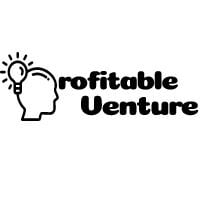
Business Model Vs Business Plan – What is the Difference?
By: Author Tony Martins Ajaero
Home » Starting a Business » Choose a Business Model
Do you want to know the difference between a <a class="wpil_keyword_link" title="Business model" Business model and a business plan? If YES, here is a detailed comparison and analysis and how each is used. A business plan and a business model look amazingly similar like two peas in a pod, but they are equally different, just like two peas in a pod. They are both part of each other but play different roles thus making the line between them seem dim.
A business plan and a business model both contain <a class="wpil_keyword_link" title="marketing strategies" marketing strategies, customer retention strategy, revenue generation strategies, and overall, they are used to outline the vision of the company. So what then differentiates a business plan from a business model and how can you make a clear distinction of both?
Business Model Vs Business Plan
What is a business model.
A business model is a company’s outlined plan for making profit. It identifies the products or services the business will sell, the target market it has identified, and the expenses it anticipates. A business model also shows the destination of the business, how it is meant to work, and what it is meant to become.
Suggested for You
- 9 Smart Steps to Create a Business Model Canvas for a Startup
- What is a Business Model? Types of Business Model
- Freemium Business Model – Everything You Need to Know
- What is the Between Business Model and Operating Model?
- Subscription Business Model – Everything You Need to Know
A business model ascertains how your business makes money. It identifies the services that your customers value and shows how funds are generated for the services your business renders to your customers. A small business can have more than one method of generating income, and it is the duty of the business model to simplify the money process by focusing on the largest income generator.
For instance, a gas station sells gas to customers, but it also provides other services such as a car wash, lube station, etc. The business model only recognizes the majority income generator, which is the sale of gas. Therefore, the business model will reflect the sale of gas to the customer, which generates income at the time of the customer’s purchase.
The business model summarily simplifies and makes revenue-generation easy to understand by focusing on the key generator, highlights exactly how you intend to acquire, retain, and service your customers. The business model can come in different distinct models like:
- Franchise model
- Direct sales model
- Advertising model
- Subscription based model
- Lowcost model
- Freemium model
- Affiliate model
- Production model
The business model is basically at the center of the business plan, as it describes how the company is positioned within its industry’s value chain, and how it organises its relations with its suppliers, clients, and partners in order to generate profits. The business plan translates this positioning in a series of strategic actions and quantifies their financial impact.
What is a BUSINESS PLAN
A business plan is a formal written document that contains business goals, the methods on how these goals can be attained, and the time frame within which these goals need to be achieved. A business plan acts like a GPS. It shows you the roadmap of how you intend to get to your destination as a business person.
It highlights the market opportunities you want to take advantage of, the existing competition, the strength and experience of your team, a detailed description of the products and services you intend to offer, and a roadmap that shows exactly how you intend to execute your plans in the market.
A business plan is a document presenting the company’s strategy and expected financial performance for the years to come.
The business plan provides the details of your business. It takes the focus of the business model and builds upon it. It explains the equipment and staff needed to meet the details of the business model. It also explains the marketing strategy of your small business, or how your business will attract and retain customers, and deal with the competition.
Furthermore, the business plan explains the financial stability of your small business at a particular point in time, as well as in the forecasted future. Overall, the business plan supports the business model and explains the steps needed to achieve the goals of that model
The business plan pays close attention to your goals, projects the cash flow, profits or losses, and ultimately shows how long and what would be required to enable the business break-even.
A sample structure of a business plan is seen below:
- Executive Summary
- Business Description
- Service or Product Line
- Market Analysis & Strategies
- Organization & Management
- Funding Request
- Financial Assumptions
- Financial Projections
Differences Between a Business Plan and a Business Model
Some of the major differences between a business plan and a business model are outlined thus;
- A business model aims at highlighting the profit making potentials of a business, while a business plan highlights every aspect of the business.
- The business plan explains in details the steps needed to achieve the goals of your business model.
- Another difference is that business plans are usually written at the beginning of a business or a business initiative, while a business model is relevant at any time, and can be written at any time.
- Again, business models are less expensive to put together, and may represent a fictional future goal. As a goal, they may be both complete and entirely unprofitable or even infeasible, quite unlike your business plan.
- A business model is centered around Value; while business plan is centered around Resources. The business plan thus lays out how to manage these resources over time to materialize the business model, grow and scale the business.
- A model explains how you will make money: for example, by selling advertising, by earning a commission, by adding a markup to services, working with partners, selling direct, charging by the hour, with additional services, etc. While a business defines specific activities, it includes timeframes, budgets, owners, dependencies and impact.

IMAGES
VIDEO
COMMENTS
By learning what exactly a business plan and business model are and how they work, you can gain a deeper understanding of the fundamentals of business operations. In this article, we explain the differences between a business model versus a business plan and provide common examples of business models.
A business model is the foundation of any business idea; it basically outlines how the concept offers value and potential for growth. Essentially, a solid business model ensures that the business will make money. A business plan, on the other hand, is the business owner's plan to put that model into action. It's much more detailed and ...
Ensuring coherence between the business model and business plan. Maintaining coherence between your business model and your business plan is necessary. For example, if a retail store decides to shift from a traditional brick-and-mortar model to an e-commerce model, this change of business model would need to be reflected in the business plan.
The business model will lay out your revenue streams and how your business delivers value. On the other hand, a business plan will have strategies and steps to grow and manage the business. Together, they give a complete picture of how to operate and scale effectively.
How a business plan and business model canvas inform business strategy. Avoid the trap of using the two terms interchangeably. As we've shown, the two have different focuses and purposes. The business model canvas (or our one-page plan template) is a great starting point for mapping out your initial strategy. Both are easy to iterate on as ...
A current Business Plan is also invaluable when seeking further investments, opening new branches, or exploring partnerships. In summation, while the Business Model encapsulates the very soul of the enterprise, the Business Plan serves as the detailed blueprint for bringing that vision to fruition.
A business model is a company's core framework for operating profitably and providing value to customers. They usually include the customer value proposition and pricing strategy. A business plan outlines your business goals and your strategies for achieving them. The two documents have a few critical differences, namely their structure and ...
Few Major Differences between the Business Model & Business Plan. ... In general, the business model and business plan are completely different notions. The business model serves as the mechanism, defining the core components that generate the company's revenue streams and sustainable operations. In contrast business plan is a written ...
The business plan is a comprehensive document that outlines the operational plan, financial projections, marketing strategies, and more. Its primary purpose is to detail how the business will achieve its goals and manage its operations. In contrast, the business model describes the underlying logic of how the business will generate revenue and sustain itself.
A business model is a high-level plan for profitably operating a business in a specific marketplace. This plan helps the company to identify the best way to go about doing its business while also ...
Key Highlights: Business Model vs. Business Plan: A business model is a comprehensive framework for creating and capturing value in a business, while a business plan is a document that outlines how a business can become viable. The primary goal of a business plan is often to secure investments.
Both internal management and external stakeholders, including investors, banks, and potential partners. The business model is the foundation of a company, while the business plan is the structure. So, a business model is the main idea of the business together with the description of how it is working. The business plan goes into detail to show ...
While the business model refers to a one-page representation of how a company creates, delivers, and captures value, the business plan is an in-depth description on a long textual document form about how your company is structured and plan to achieve strategic and financial objectives. This business plan is a document that contains every data ...
The truth is, they are different things with different purposes. The main difference between a business plan and business model is that a business plan outlines your goals and strategy to grow your company, while a business model shows you how to generate revenues. Read on to learn more about this subject, including what types of business ...
A business model is centered around Value; while business plan is centered around Resources. The business plan thus lays out how to manage these resources over time to materialize the business model, grow and scale the business. A model explains how you will make money: for example, by selling advertising, by earning a commission, by adding a ...
A business model, on the other hand, is a business's rationale and plan for making a profit. If the business plan is a road map that describes how much profit the business intends to make in a ...
Business plan. Where a business model is a blueprint, a business plan is a roadmap. A business plan is a formal written document that includes a description of the business you want to run, your business goals, and the plan for reaching those goals. A business plan is a detailed document that contains sections such as: Marketing Plan, Startup ...
Four key differences: business model vs. business plan. Now that you know the exact meaning of a business model and business plan, it's time to understand the difference. 1. Focus. Your business model focuses on optimizing the internal and external company operations to earn maximum profits. It explains your relationship with dealers ...
In simple terms, a business model is how a company makes money, and the business model canvas is a tool to help entrepreneurs find a coherent business model for their business (or for new products or services). A business model can be broken down into two parts: The first part deals with what a business is about.
In The New, New Thing, Michael Lewis refers to the phrase business model as "a term of art.". And like art itself, it's one of those things many people feel they can recognize when they see ...
A dermatologist turned entrepreneur, Jalachari Ella, Managing Director and Head of research and development of Ella Foods, wears her paternal name as a badge of honour.
Some of the major differences between a business plan and a business model are outlined thus; A business model aims at highlighting the profit making potentials of a business, while a business plan highlights every aspect of the business. The business plan explains in details the steps needed to achieve the goals of your business model.